Third-party logistics providers
Gfk

Helping the helper transform
Supply & climate change
Mitigating the risk of extreme weather
NHS England
Building a commercial community through the NHS Central Commercial Function
Sanofi French healthcare giant’s CSCO
Arnaud
Dourlens on building a resilient value chain

Strategy, sourcing and supply chain resilience of global pharma



more
more
more
Learn
Learn more Learn
Learn
EDITOR-IN-CHIEF
SEAN ASHCROFT
CHIEF CONTENT OFFICER
SCOTT BIRCH
MANAGING EDITOR
NEIL PERRY
PROOFREADER
JESS GIBSON
CHIEF DESIGN OFFICER
MATT JOHNSON
HEAD OF DESIGN
ANDY WOOLLACOTT
LEAD DESIGNER
JUSTIN SMITH
The SupplyChain Team

FEATURE DESIGNERS
MIMI GUNN
SOPHIE-ANN PINNELL
HECTOR PENROSE
SAM HUBBARD
REBEKAH BIRLESON
ADVERT DESIGNERS
JORDAN WOOD
DANILO CARDOSO
CALLUM HOOD
VIDEO PRODUCTION MANAGER


KIERAN WAITE
SENIOR VIDEOGRAPHER
HUDSON MELDRUM
DIGITAL VIDEO PRODUCERS
MARTA EUGENIO
ERNEST DE NEVE
THOMAS EASTERFORD
DREW HARDMAN
JOSEPH HANA
SALLY MOUSTA
JINGXI ANG
PRODUCTION DIRECTORS
GEORGIA ALLEN
DANIELA KIANICKOVÁ
PRODUCTION MANAGERS
JANE ARNETA
MARIA GONZALEZ
CHARLIE KING
YEVHENIIA SUBBOTINA
MARKETING MANAGER
KAYLEIGH SHOOTER
PROJECT DIRECTORS
MIKE SADR
CRAIG KILLINGBACK
MEDIA SALES DIRECTOR
JAMES WHITE
MANAGING DIRECTOR
LEWIS VAUGHAN
CEO
GLEN WHITE
THE COMMUNITY
JOIN
Supply chain visionary lights the way


In the late 70s, Dr Wolfgang Partsch gave us supply chain management, and his thinking is more relevant today than ever
Every industry has an elite group of thinkers – visionaries who have shaped the working worlds of generations of professionals.
In supply chain, one of those thinkers is Wolfgang Partsch, who in the late 1970s created the concept of supply chain management.
This issue includes an interview with Dr Partsch. Five decades ago, the Austrian-born doctor of physics had a vision for how companies can best make, move and deliver goods around the world.
“My vision was to break up information silos,” he says. “The goal was to help businesses see from one end to the other, operationally, with no interruption of information.”

Sound familiar? Today, supply chain professionals call it ‘having end-to-end supply chain visibility’.
Fifty years on, everything – and yet nothing – has changed in supply chain. This is precisely why people like Dr Partsch are visionaries: they are able to see, and articulate, simple, timeless truths about the world around us.
His story makes for fascinating reading, as do his views on today’s supply chain challenges, many of which are explored throughout this issue.
SEAN ASHCROFT sean.ashcroft@bizclikmedia.com


SUPPLYCHAIN DIGITAL MAGAZINE IS PUBLISHED BY © 2023 | ALL RIGHTS RESERVED supplychaindigital.com 5 FOREWORD
“Visionaries like Wolfgang Partsch are able to see, and articulate, simple, timeless truths about the world around us”


Our Regular Upfront Section: 10 Big Picture 12 The Brief 14 Timeline: ESG investment in supply chain 16 Trailblazer: Dr Wolfgang Partsch 20 Five Mins With: George Kochanowski Sanofi The arrival of the ‘haute couture’ supply chain 26 Supply Chain Supply visibility shows clear and present dangers 42 CONTENTS
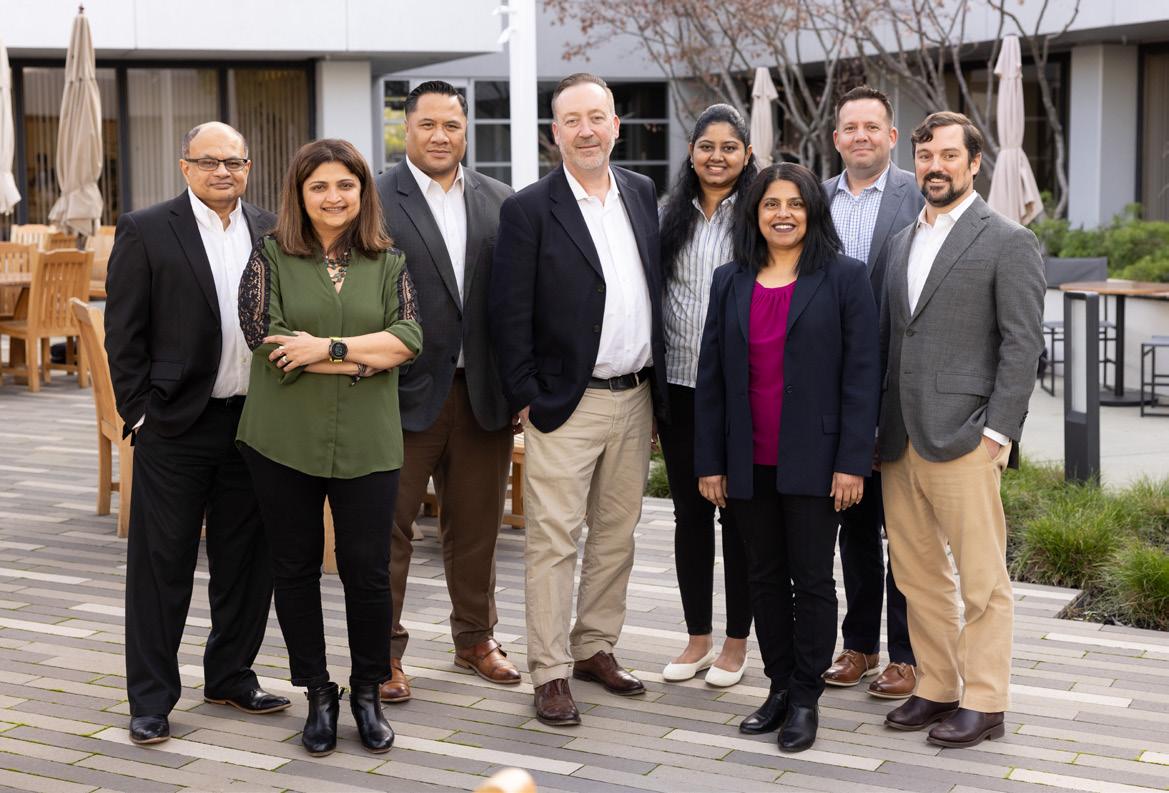



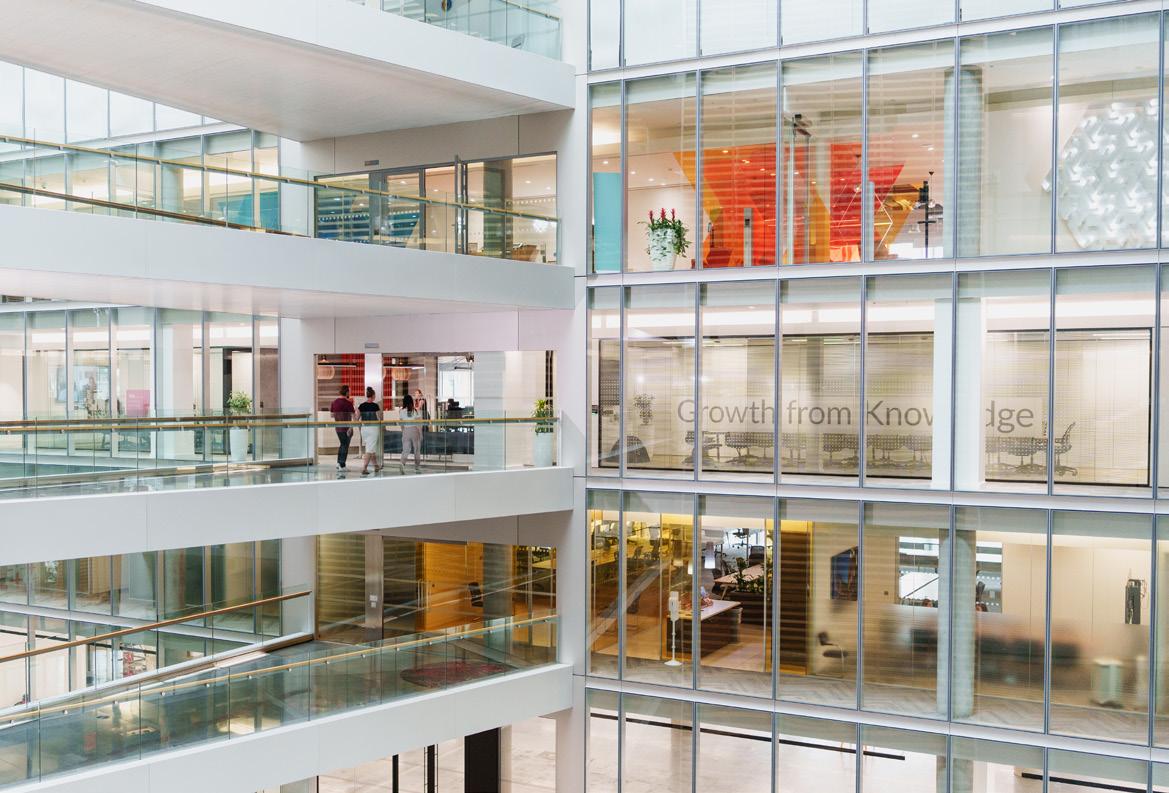
















































































































































iQuantum A modern procurement platform for today’s business 72 NHS England Building a commercial community through the NHS Central commercial function 50 Tech & AI Blockchain strengthening links in supply chain 106 Logistics Reshoring takes hold in face of supply chain pressures 64 Gfk Helping the helper transform 94 Sustainability Climate change is ill wind threatening supply? 84 Top 10 Third-party logistics providers 114
supplychaindigital.com 9
BIG PICTURE
54 million avocados, for guacamole (675 truckloads)
Food & drink supply chains in US brace for Super Bowl Arizona, United States
Early February marks one of the most watched single sporting events in the world: SuperBowl.
The 2023 event will be held at State Farm Stadium, Glendale, Arizona.
Consumption of food and drink in the US on SuperBowl day goes through the roof. People consume an estimated: 1.2 billion chicken wings (1,590 truckloads); 50 million cases of beer (27,778 truckloads); 28 million lbs of potato chips (350 truckloads); and 54 million avocados, for guacamole (675 truckloads).

10 February 2023
28 million lbs of potato chips (350 truckloads)
1.2 billion chicken wings (1,590 truckloads)

supplychaindigital.com 11
THE BRIEF
BY THE NUMBERS
Planned large-scale hydrogen power schemes, by country







Source: McKinsey
READ MORE
314 Europe
154 Asia & China
READ MORE
103 North America
54 Oceania
EDITOR'S CHOICE
COUPA & IVALUA ISSUE ADVICE ON NEW GERMAN ESG LAW









Coupa, Ivalua & Inverto say new law demanding strict ESG auditing in supply chains forces global business to comply if they want to keep German customers.
READ MORE
2023 PREDICTIONS FOR LOGISTICS, SUPPLY CHAIN & PROCUREMENT




Danone, Proxima, FourKites, Endava & Globality share their 2023 predictions for supply chain, logistics, procurement and digital transformation.
READ MORE
READ MORE
“There is no single provider on the market who competes with us pin-to-pin”
Hetal Mehta Chief Executive Officer, iQuantum
“It’s my job to get the drug to the patient on time, whatever the situation ”
Arnaud Dourlens Head of Clinical Supply Chain Operations , Sanofi
“Standardising and stabilising processes is far more important than the actual systems that are used”
Suki Becker
VP Procurement and Real Estate, GfK
12 February 2023
Efficio finds CPO
ESG-disconnect with procurement teams
Controlling costs is a higher priority for executives -- including chief procurement officers -- than driving sustainability initiatives, new research suggests.

A report called Bridging the Gap, from procurement and supply chain consultancy, Efficio, suggests that more than nine in ten (93%) of business leaders believe revenue maximisation is ‘important’ or ‘very important’ to their business strategy, compared to the 66% who say the same of implementing net zero plans, such as controlling Scope 3 emissions in the supply chain.
Efficio says the findings bring into even sharper focus the key role procurement leaders must begin to play if board-level plans on sustainability and ESG are to be translated into meaningful action.
The report highlights a disconnect between chief procurement officers (CPOs) and procurement teams, with CPOs fixated by “compliance-based metrics rather than core ESG issues”. It also says too many CPOs fail to act upon sustainability opportunities flagged by team members who are involved in the daily management of goods and services.
WOMEN IN LOGISTICS
Stockholm Ports appoint Magdalena Bosson as its new CEO, while US logistics CEO Techa Pacitto wins a prestigious industry award given to women making a lasting impact in the business community. She won for 'thinking differently about supply chain'
AUTONOMOUS HAULAGE
Uber Freight is to deploy Volvo’s autonomous transport solution on the Uber Freight network on select routes, starting in Texas. The partnership marks Uber Freight’s first commercial collaboration with an autonomous fleet.
SEA FREIGHT RATES
Rates for shipping containers from Asia to the US are falling towards pre-pandemic levels and may still have further to drop, while long shipping delays are increasingly disappearing from the market, according to analysts.
BOARD-LEVEL ESG ACTION
Controlling costs is a higher priority for executives -- including chief procurement officers -- than driving sustainability initiatives, suggests research from the world's largest procurement and supply chain consultancy, Efficio.
W I N N E R S
FEB 23
L O S E R S
supplychaindigital.com 13
ESG INVESTMENT IN SUPPLY CHAIN
Not so long ago, ESG was a ‘nice to have’ in supply chain. No longer. Now consumers demand end-to-end ESG compliance across an organisation. Here is how investment in ESG initiatives evolved.
TIMELINE
14 February 2023
1960s
The dawn of sustainable investment
The 1960s sees the beginning of ‘socially responsible investing’. Organisations begin to exclude stocks or entire industries from their portfolio should their operations not be seen as ‘socially responsible’.
2005 ESG is born
The term Environment, Sustainability & Governance (ESG) is coined by the UN Global Compact in 2005 in a study called Who Cares Wins, which urges the financial industry to better integrate ESG issues in securities brokerage.
2013
The rise of ESG investment
ESG investment begins to drastically increase, following heightened interest in the correlation between corporate sustainability and positive financial results.
2015 The Paris Agreement
In 2015, the Paris Agreement – a legally binding international treaty on climate change – is signed by most leading countries. This encourages investors to begin targeting companies with ESGcompliant supply chains.
2018
GRI standards
GRI Standards allow organisations to publicly report the impacts of their activities in a transparent way to stakeholders. Launched in 2000, they begin to see serious ESG traction around 2018.
supplychaindigital.com 15
Dr Wolfgang Partsch

The Austrian physicist who is the father of modern supply chain management
In
the late 1970s,
physicist Dr Wolfgang Partsch used science as the basis for his revolutionary concept of supply chain management
In the November issue of Supply Chain we featured British logistician and business consultant, Keith Oliver, as our ‘trailblazer’,and presented him as the person who coined the term ‘supply chain’. On publication, the article generated strong interest online, especially on LinkedIn.
Many people commented on the piece, with most saying the same thing: Keith Oliver may have been responsible for introducing the term ‘supply chain’ into popular culture, but he was not the one who gave it to the world.
That honour, we were told, should go to Wolfgang Partsch, whose LinkedIn profile describes him as the ‘Inventor of Supply Chain Management’.
Following feedback on LinkedIn we amended the Keith Oliver article, adding the following paragraph:
“It should be pointed out that Oliver was part of a team that created the concept of 'supply chain management'. The first project the team was involved in ran from 1980-82 in Switzerland, under the management of business analyst Wolfgang Partsch. The term first appeared in print in 1982, in the German business magazine, Wirtschaftswoche.”
TRAILBLAZER
Dr Partsch himself contacted us, grateful for the amendment, but added that we still didn’t have anything like the full story of how ‘supply chain management’ was born. And so we fixed up an interview, and Dr Partsch told us, in captivating detail, how he helped change the face of supply chain forever.
Partsch was born in Vienna, and went on to gain a PhD in Physics from the city’s university. For four years in the early 1970s he was a software engineer, before becoming a logistics consultant with Kearney, in 1975. Three years on, he joined Booz.Allen & Hamilton, where as a Senior Associate he began formulating the
concept of supply chain management, with Keith Oliver part of the same team.
“Keith was a consultant,” says Partsch. ‘I was younger, and a mere associate. Although supply chain management was my concept, Keith was the one who presented it to clients and so he ended up getting all the glory,” he adds, grinning.”That’s just the way it is.”
Partsch’s vision for how companies can best make, move and deliver goods around the world may have been formulated over 50 years ago, but with so much disruption and uncertainty today, they have never held more sway.

supplychaindigital.com 17
“MY IDEAS AROUND SUPPLY CAME FROM EARTHQUAKES, WHICH YOU CAN MEASURE FROM THOUSANDS OF MILES AWAY”

18 February 2023
“BY THE EARLY 1980s, HE HAD FORMULATED
TRAILBLAZER
A COHERENT SUPPLY STRATEGY THAT WAS FIT TO BE PRESENTED TO BOARDROOMS”
“My vision was to break up information silos,” he says.

Sound familiar?
He adds: “The goal was to help businesses see from one end to the other, operationally, with no interruption of information.”
Or, in today’s terminology, end-to-end supply chain visibility.
Partsch’s revolutionary thinking was based not on business thinking, but natural science.
“It really struck me how, with earthquakes, you can measure shockwaves from thousands of miles away. My vision was of something similar for supply, whereby something like purchasing has an effect on sales and production at the other side of the chain,” he explains.
Partsch’s thinking here was crystallised by a seminal 1961 book called Industrial Dynamics, by Jay Forrester.
“Forrester was an industrial engineer, and it’s a very mathematical book, but I am a physicist, and so I understood his ideas.”
It was in the late 1970s that Partsch’s vision for the future of supply began to take shape, and by the early 1980s, he had formulated a coherent supply strategy that was fit to be presented to boardrooms.
It was on a journey to a Swiss client that Partsch and his team chanced upon a name for his concept, and all thanks to a snowstorm..
“We were driving to a client through heavy snow,” he recounts. “We had to get the snowchains out to put on the wheels, and that’s when someone got the idea of using the idea of a chain to describe our strategy of managing supply, because chains have many links that form something whole.”
Now, 40 years on, Dr Partsch’s thinking has helped hundreds of companies – including Pierre Cardin, Red Bull, Nestlé, Siemens, IBM, and Ferrari – save billions of dollars, by streamlining their supply chains, and making them run more efficiently.
supplychaindigital.com 19
GEORGE KOCHANOWSKI
Empty shipping containers clog ports, slowing supply chains and pumping out carbon. George Kochanowski, CEO of Staxxon may just have a solution…
Q. TELL US A LITTLE OF YOUR PROFESSIONAL BACKGROUND?
» I received a bachelor’s degree in Chemical Engineering from the Polytechnic Institute of Brooklyn. Some graduate studies in Business at Northwestern University.
As the inventor of all-plastic retro-reflective traffic signage, I received Plastic Product of the Year in 1998. As Manager of Process Control for GE Plastics, I received a leadership award for state-of-the-art computer control systems and networks at GE’s Alabama facility.
I’ve held senior corporate leadership positions with public and private companies, ranging from electromagnetics to advanced composite materials.
Q. WHAT DOES STAXXON DO?
» We design foldable intermodal shipping containers that exceed ISO and CSC standards and the systems needed to fold them standing upright in bundles, safely and quickly. We are in the process of developing a network of fabricators in Europe and North America to produce our assemblies.
Q. WHAT CAUSES ‘EMPTY RUNNING’?
» Empty containers clog roads and ship terminals, causing port congestion and leaving little space to unload ships. This then forces many ships to wait offshore, wasting resources and slowing the supply chain to a crawl. The problem disappears only as the ships sail away.
.
Q. HOW SERIOUS IS THE EMPTYRUNNING PROBLEM?
» Unfortunately, due to global importexport imbalances, the ‘empties’ – when delivered to terminals – cause port congestion.
This has a domino effect, as they need to be stored on their chassis, temporarily, at off-terminal storage facilities reducing chassis availability. (A chassis is a trailer or undercarriage used to transport ocean containers by road.) This then starves exporters both of empties and. The empties are at the wrong place and at the wrong time. The environmental price is steep for each move, as each non-productive activity is handled by fossil-fueled equipment.
As we move into the post-pandemic era, where there will be less commerce, port productivity should increase. But at a price, as the cost of labour and fuel have risen by double digits, sparking global inflation. More than ever empties are more expensive to reposition; it costs more to move nothing around.
Q. ARE SHIPPING CONTAINERS OUTDATED?
» The intermodal shipping container is 70 years old. Over the years it has been refined but ownership costs have increased. For example, example, this year, the annual
FIVE MINUTES WITH... 20 February 2023
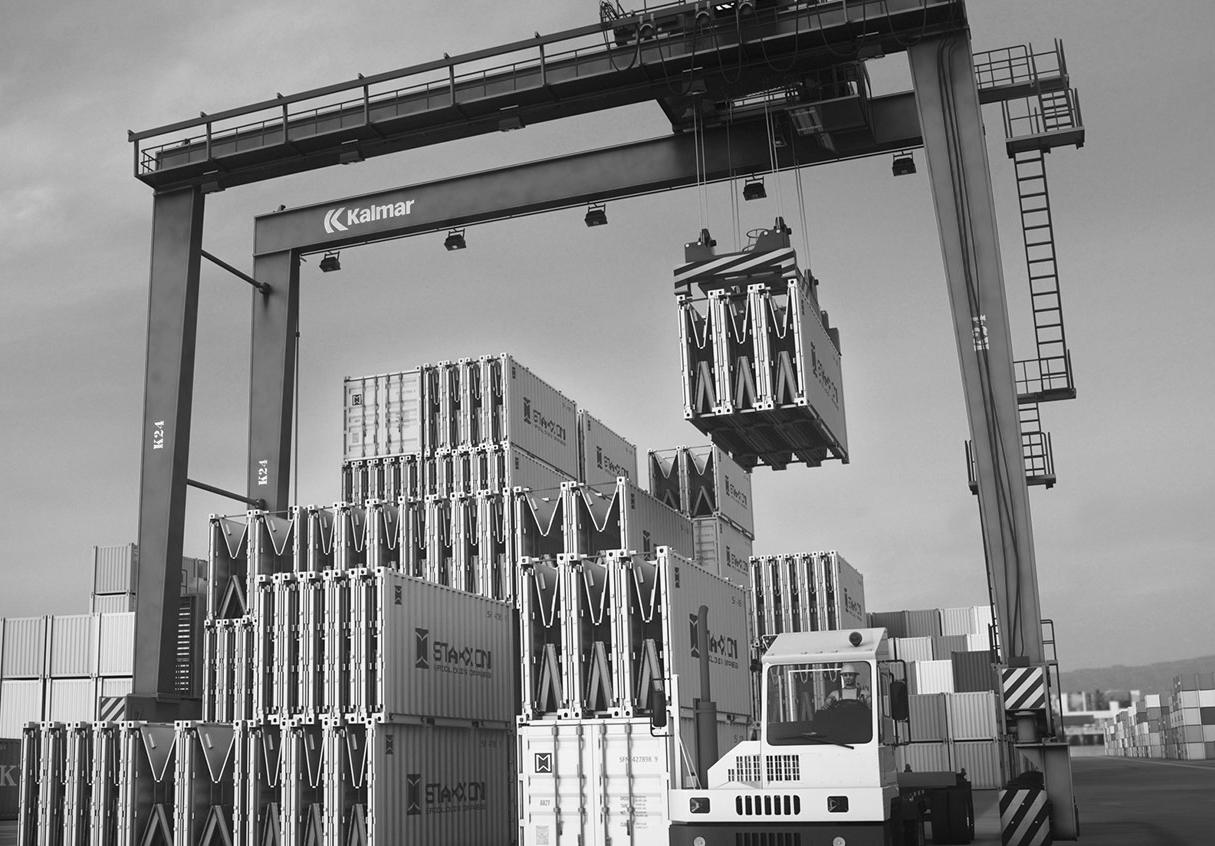

operating prices have ranged between $25,000 to $40,000 to reposition an empty container. Those costs are primarily labour-, fuel-, and land-use, and all are increasing at the rate of inflation.
Q. HOW DOES YOUR SOLUTION HELP?
» For 50 years, the repositioning of empty containers has had a negative financial effect and a severe environmental impact.
During this time, the only method of folding was a technology whereby the end walls collapsed onto the floor. Unfortunately, the cost of ownership was too high, and many of the design limitations were not overcome. In the end, collapsible units drew little interest.
Staxxon approaches the problem differently. A Staxxon box folds like an accordion. We always keep the box upright even when folded. This offers the capability to stack the bundled sets anywhere on the ship.
Plus, you don’t have to wait for a set number of collapsed containers to be nested to meet required ISO dimensional standards, saving space at ports, reducing the need for offterminal temporary storage, and freeing up numerous chassis.
With the number of moves now minimised, there is a significant reduction in the use of fossil fueled vehicles and pollution.
The goal of the Staxxon container is to create a ROI while reducing the environmental impact.

Q. WHO INSPIRES YOU?
» Early in my career, I had the benefit of working for GE Plastics when Jack Welch was running GE, and years later, I ran an advanced composites company for Dr Walt Robb, who was Welch’s close advisor and confidant when Robb was at GE. Although not without faults, these two were always inspiring to be around.
22 February 2023
FIVE MINUTES WITH...

supplychaindigital.com 23
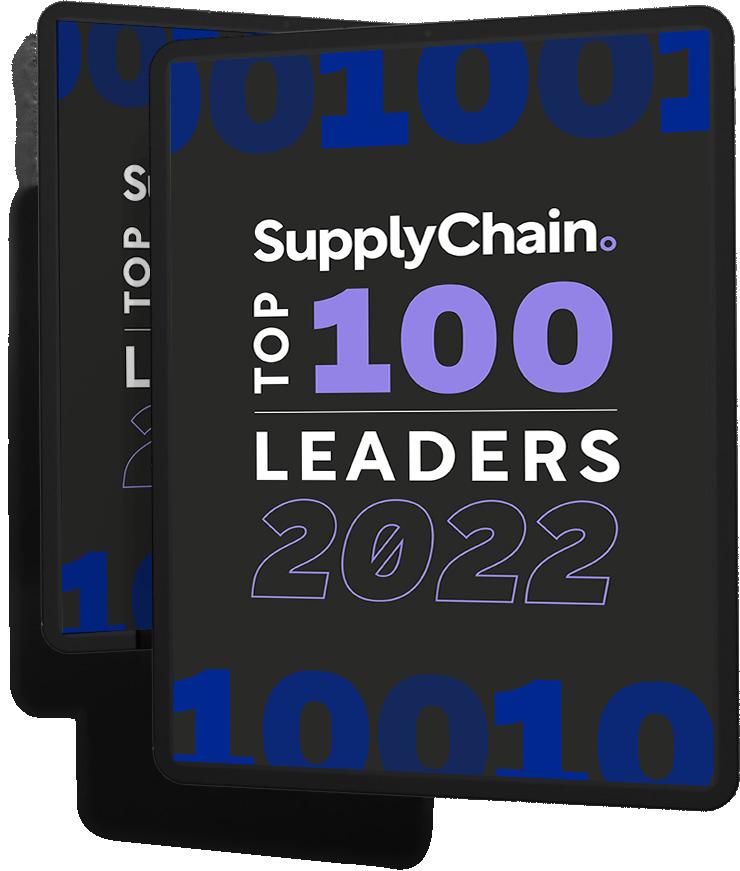
0 0 0 0 1 1 A BizClik Brand

supplychaindigital.com 25 10 0 0 0 1 LEADERS2022 • LE A D SRE 2202 • SREDAEL2202 • EL A D ERS2022 • Creating Digital Communities OUT NOW Read now Don’t miss this Issue! The most influential people in Supply Chain
WRITTEN BY: HELEN ADAMS
PRODUCED BY: CRAIG KILLINGBACK

26 February 2023
The
The arrival of the ‘haute couture’ supply chain

supplychaindigital.com 27 SANOFI
Arnaud Dourlens, Head of Clinical Supply Chain Operations at Sanofi, on building a resilient supply chain and creating efficient clinical trials
Sanofi is a one-of-a-kind pharmaceutical company for the modern age. Self-described as ‘pushing the frontiers of science’ and ‘chasing the miracles of science to improve peoples’ lives’, the 100,000-plus employee company delivers ‘life-changing treatments and life-saving vaccines’ to patients around the globe, in more than 100 countries.

The man in charge of the entire strategic sourcing and shipping process for the pharma company is Arnaud Dourlens, Head of Clinical Supply Chain Operations, who also oversees worldwide trial supply.
At heart, though, Dourlens is an engineer. He began his career in the FMCG (fastmoving consumer goods) industry, working for giants Procter & Gamble. Later, he moved into the luxury sector – the domain of beauty powerhouses such as perfume and cosmetics’ leader Christian Dior.
“For more than 10 years, I worked across operations, the supply chain, new product launches, and industrialisation – first in the makeup area and then in every cosmetic area, meaning makeup, fragrances and skincare,” outlines Dourlens.
In 2017, he switched to Sanofi as Production Director and embraced the pharmaceutical environment. During this period, Dourlens was based at the Compiègne site, in Northern France.
28 February 2023 SANOFI

supplychaindigital.com 29
Arnaud Dourlens, Head of Clinical Supply Chain Operations at Sanofi
“It’s quite a strategic site here,” says Dourlens. “I led the team on the road of site improvement and transformation to be fit for the future.”
Dourlens joined Sanofi because he was passionate about the pharmaceutical field and had experience in demanding, highadded-value environments.
“I was proud to have worked in the luxury sector, making it possible for people to be even more beautiful than they are, thanks to makeup and cosmetics,” says Dourlens. “But being a part of a journey where you are allowing patients to access treatment, to
change the life of some people on a daily basis and improve their wellbeing may be a bit less trendy, but it’s so important.”
Dourlens joined the pharma’s Clinical Supply Chain Operations in Montpellier in 2020, during the COVID-19 pandemic, in this period of chaos, it was up to Dourlens to ensure the business continuity.
“That was not easy,” says Dourlens. “As Global Head of Clinical Supply Chain, I'm heading the world supply chain of Sanofi’s clinical development – overseeing more than 300 clinical studies, making sure that we are delivering their investigational

“More than ever, the level of uncertainty we have in the worldwide clinical supply chain is just incredible”
30 February 2023 SANOFI
ARNAUD DOURLENS HEAD OF CLINICAL SUPPLY CHAIN OPERATIONS, SANOFI
treatments to all the clinical patients, either at home or at hospital.”
Clinical trial supply chains – a source of value
Dourlens believes that the clinical trial supply chain can be a source of value for patients and the healthcare sector.
“When a patient is suffering from a disease, he or she is in a tough situation and clinical trials are an option of care for him or her,” explains Dourlens.
Behind the clinical trial, there are a lot of activities that are happening around
EXECUTIVE BIO
ARNAUD DOURLENS
TITLE: HEAD OF CLINICAL SUPPLY
CHAIN OPERATIONS
COMPANY: SANOFI
INDUSTRY: HEALTHCARE
LOCATION: GLOBAL

Arnaud Dourlens is an "Arts et Métiers" engineer. He began his industrial career in the FMCG sector where he held growing responsibilities. Then he joined the LVMH group where he reorganised new product launches and industrial investments in the Make-up segment .
Arnaud joined Sanofi in 2017 as Production Director of a major production site (>€2.5bn turnover). He has been a key player in the development of the continuous improvement mindset and in the transformation of the site through IT projects, investments and activity growth.
Since 2020, he has been the global head of Sanofi Clinical Supply Chain Operations, managing worldwide clinical supply teams involved in more than 300 clinical studies.

supplychaindigital.com 31
40% Average drug waste reduction
30% Average supply cost savings

2-6 Months reduction in time to market
100% Patient service level
ambitious clinical development through optimal supply chain planning
Enable
N-SIDE Suite is a game changer in clinical supply chain
N-SIDE Life Sciences VP Sébastien Coppe explains how leveraging data & AI can streamline clinical plans, accelerate trials, mitigate risks and curb waste
N-SIDE combines deep clinical supply chain expertise with advanced mathematics, packaged into solutions to optimise the entire clinical trial supply chain by taking a global view and making data-driven decisions at every step.
“N-SIDE has been building extensive expertise over the past 20 years in empowering supply chain management in clinical development through advanced analytics and AI,” says Sébastien Coppe, N-SIDE Life Sciences VP.
Pharma companies of all sizes use the N-SIDE Suite, an intelligent SaaS solution, to avoid supply chain bottlenecks, minimise waste, control costs, reduce time-to-market, speed up the initiation of new trials, manage production plans, monitor supply chain strategy for ongoing trials, and support commercial launches. Pharmaceutical and healthcare company Sanofi started a strategic partnership with N-SIDE five years ago to digitalise their clinical supply chain.
This has led to impressive outcomes for their supply chain efficiency.
The N-SIDE Suite consists of the Supply App, for risk-based clinical supply optimisation; the Production App, for building and maintaining an optimal manufacturing strategy; and a comprehensive slate of BI dashboards and expert services.

The N-SIDE Supply App helps pharma companies optimise their supply chains throughout the trial lifecycle. It allows them to make data-driven decisions about issues including overage, packaging, sourcing, IRT setup, and depot shipments, in a smart and interconnected way. With more than 12,000 trials optimised, N-SIDE’s Supply App can be used to design and optimise any trial of any size and complexity.
“Globally, when you consider what happened during and after the Covid pandemic, we’ve seen a lot of good changes backed up by AI technology, leading to really faster clinical development activity,” says Coppe.

GET IN TOUCH TODAY
www.n-side.com
The arrival of the ‘haute couture’ supply chain
defining a protocol, defining the way in which the study will be carried out, and the way that the data will be managed.
“The main thing that the patient will see when they are included in a Sanofi clinical trial will be the treatment. The patient will see the investigator, the physician and the hospital staff who will take care of them, but no one from Sanofi,” said Dourlens.
Yet, the treatment that the patients will get – when they receive a box of drugs or vaccine designed to either save or vastly improve their life – comes from Sanofi. It’s Dourlens’ team’s job to get the drug to the
patient on time, whatever the situation.
“We have been experimenting with our supply chain for years, during both the COVID-19 pandemic and Russia’s invasion of Ukraine,” says Dourlens. “We were still able to continue to supply almost everywhere during the pandemic.”

So, how did managing the COVID-19 clinical supply chain compare to supporting it after Russia’s invasion of Ukraine?
“Many patients have been in a terrible situation due to the war, but even more so when expecting a life-saving drug that it isn’t possible to receive.”

34 February 2023 SANOFI
Sanofi is creating value in its patientcentric care by thinking about the patient in these types of extraordinary circumstances, devising ways to overcome situations such as war or pandemics.

Part of this is the company delivering drugs to patients’ homes, alongside a nurse where necessary: “Sometimes a patient is very far away from the clinical site, so a nurse's visit with the medicine allows easier access to the clinical trial.”
This reduces the burden of the trial on the patient, something Sanofi is very proud to facilitate. But it’s the supply chain itself that’s
responsible for making this easier for both the nurse and the patient.
“By reducing the number of trips back and forth to the hospital, we’re supporting healthcare staff and patients. But it is down to the patients to make sure that they are taking their medicine on time.”
If we think about value, we have also to discuss a bit about trial design. “When you have a clinical trial, you’re able to influence the trial design to make sure that you limit the risk of shortage and wastage,” explains Dourlens, who, in his role, has the job of optimising the capacity in supplying the trial.

supplychaindigital.com 35
The healthcare sector is aware that it is moving into an era where the cost of drugs and products is high, due to supply chain complexity, in addition to the development of drugs. The clinical supply chain has the ability to influence the way Sanofi performs the trials – something Dourlens’ team is working on each day.

“We know that, in the near future, trial design is going to be more and more complex,” he says. “We will be adjusting the design in the course of the trial, depending on the results; it's what we call adaptive trial design.”
Sanofi’s supply chain must have the agility and flexibility to follow the changes it hopes to enact, though there are analytics tools on-hand to improve productivity, resilience and sustainability.
“To have an important impact and run successful, innovative therapies, we must avoid bottlenecks linked to drug supply and we must then guarantee that the treatment is available to the patient as quickly as possible,” says Dourlens.
“We’re not getting drugs that are similar for everybody; this is a tailor-made supply chain. I like to say that it’s an haute-couture
“The world has changed over the past two years –in the supply chain, in the clinical supply chain, and across the pharmaceutical supply chain”
36 February 2023 SANOFI
ARNAUD DOURLENS HEAD OF CLINICAL SUPPLY CHAIN OPERATIONS, SANOFI
supply chain. This is where digital healthcare is really able to provide the required end-toend traceability.”
Whatever the production is – internal or external – and whatever the geography level, digital is helping to make sure Sanofi is tracking all drugs everywhere in the world, at each step of the process.

Global cost optimisation & resilience strategies
Clinical trials are happening in quite a complex landscape, because each country has its own specific regulations. Depending on the design of the trial, Dourlens’ team may have different requirements to meet, such as importation and exportation rules. The number of changes, from a regulatory perspective, in the worldwide environment is huge.
“To make a long story short, regulatory complexity and varied trial design is a big challenge. Digital healthcare is a great help in making sure that we are within these constraints in the right way,” says Dourlens.
€40bn turnover per year
100K+ number of employees
60+ sites across the world
supplychaindigital.com 37
ARNAUD DOURLENS HEAD OF CLINICAL SUPPLY CHAIN OPERATIONS, SANOFI
From an integration and cost-optimisation viewpoint, digital healthcare is also important. Today, nobody is able to run a full supplier clinical trial end-to-end without any partners. Therefore, a smooth and efficient integration becomes a must.

“When we start speaking of partners, we start speaking of making interfaces, and
when we speak about interfaces, we speak about exchanging data. The level of platform integration thanks to digital development is also key. If you have a nice digital ecosystem internally, but you don't have the proper level of connection with all the players that are contributing across your value chain, you’re not fully leveraging the efficiency of your digital system,” he says.
To perform in the global clinical supply chain, there are some core activities that are part of the internal expertise of Sanofi: optimising the design of the trial from a supply perspective, the logistics setup, packaging design, and, ultimately, the needs of the patient.
There are, however, some other areas where Sanofi relies on partners due to their greater expertise and experience with a
“When a patient has a disease, they’re in a tough situation. Clinical trials are an option of care for them”
supplychaindigital.com 39 SANOFI
range of customers. Put simply, these partners are able to offer services that are complementary to internal ones.
One of these integral partners is Thermo Fisher Scientific, with whom Sanofi has worked for a number of years – though a partnership devoted to the US market was only agreed two years ago, which specifically focuses on the subcontracting of packaging labelling and distribution activities for certain studies.

“We are relying on them mainly to supply everything that is manufactured in the US and then distributed worldwide for studies,” says Dourlens. “We're reaching a level of maturity and interaction between the teams in terms of development that is really high.
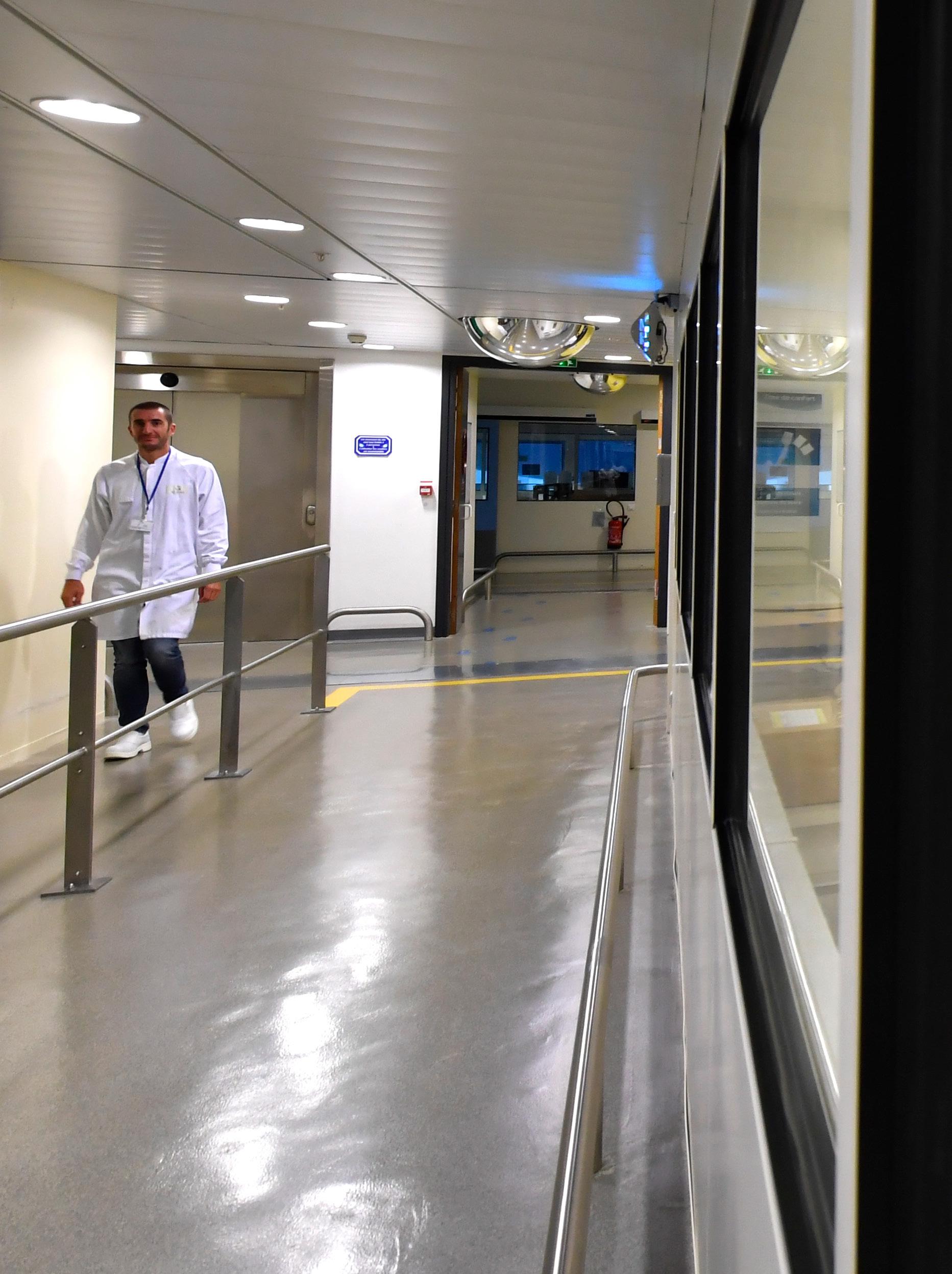
“
By reducing the number of trips back and forth to the hospital, we’re supporting healthcare staff and patients”
ARNAUD DOURLENS HEAD OF CLINICAL SUPPLY CHAIN OPERATIONS, SANOFI
40 February 2023 SANOFI
Thermo Fisher Scientific has been helping us in our journey to make sure that we deliver the drug at the right time – any time – but also, that we're doing it at the right cost with the right level of optimisation.”
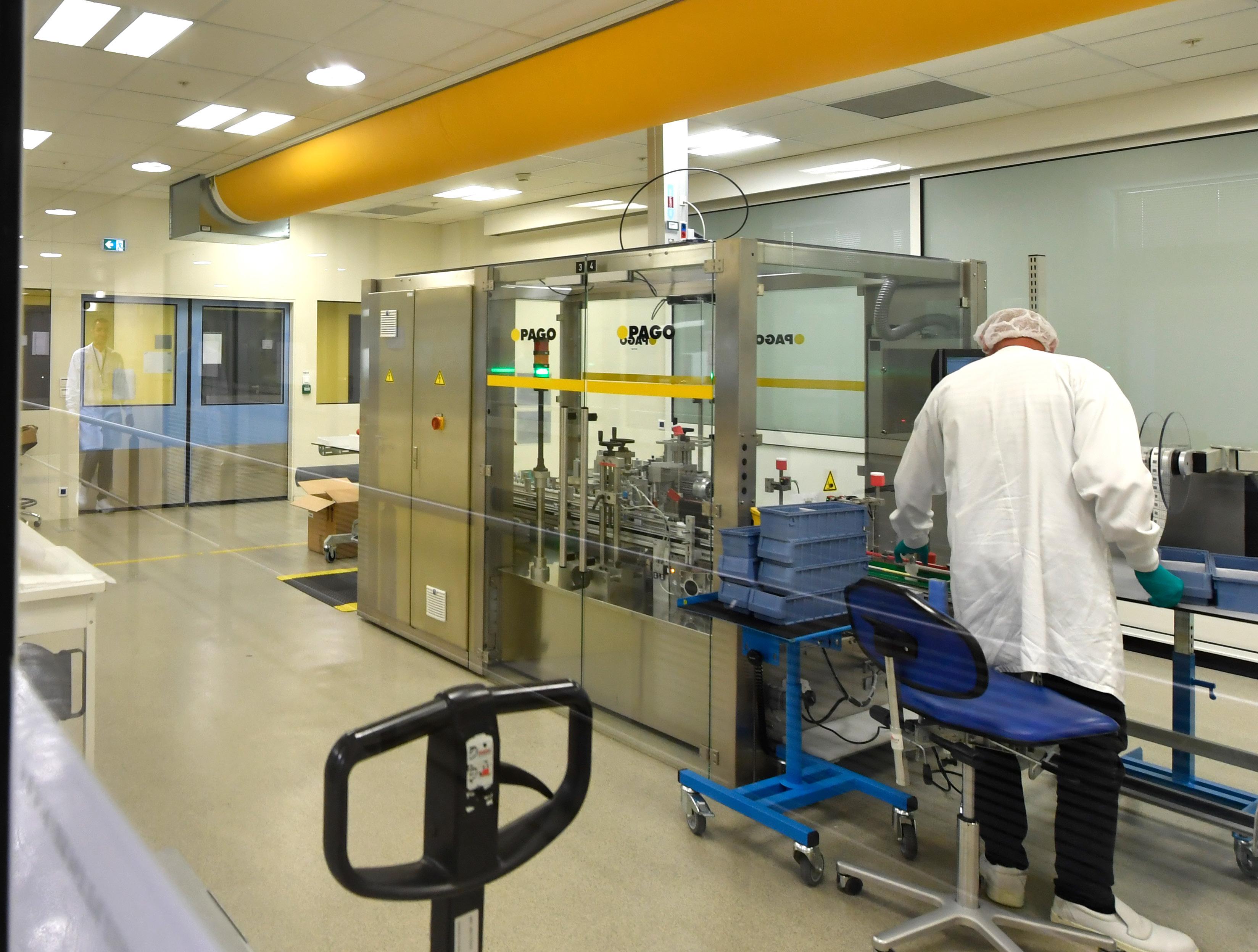
Any partnership requires trust because it is a vital ingredient, but for the healthcare supply chain, it is absolutely crucial.
“In a partnership, nothing happens without trust,” says Dourlens. “The second ingredient is to make sure you have a partnership based on a common interest: in a good partnership, there cannot be somebody who is winning and somebody who is losing.”
Over the next year at Sanofi, Dourlens highly expects the world to change again.
“More than ever, the level of uncertainty we have in the worldwide clinical supply chain is just incredible,” he says. “The world has changed over the past two years –in the supply chain, in the clinical supply chain and across the pharmaceutical supply chain.”
Here, the level of flexibility and agility is essential to be able to adapt for the supply chain. Yet, as the world has changed, Sanofi has also grown more resilient – so much so that managing a complex supply chain is Dourlens’ 2023 goal.
supplychaindigital.com 41
SUPPLY VISIBILITY SHOWS CLEAR AND PRESENT DANGERS
What supply chain bosses really need is a crystal ball, but the next best thing is supply chain visibility. Here, Ryan Closser of FourKites explains why
WRITTEN BY: SEAN ASHCROFT
What every supply chain chief really needs in today’s tumultuous world is an in-house Nostradamus – someone able to peer into the future and headoff yet more disruption, from whatever catastrophes the future has in store for already beleaguered supply chains.
But seers blessed with supernatural insight are rather thin on the ground, at least in B2B circles; I was unable to find even a single one on LinkedIn. And so it is that businesses have to make do with the nextbest-thing to make supply chains more resilient: visibility.
Having a clear, end-to-end picture of one’s supply chain at any given moment in time is the goal. As the past two years of conveyorbelt shocks to supply chains has shown us, visibility has never been more important.
Yet knowing what is needed and achieving it are two very different things.
42 February 2023
VISIBILITY AND DANGERS
supplychaindigital.com 43 SUPPLY CHAIN









www.prenax.com 1 2 page ADVERT OCTOBER.indd 1 04/07/2022 10:43:44
RYAN CLOSSER DIRECTOR PROJECT MANAGEMENT & NETWORK COLLABORATION, FOURKITES
A recent CIPS & Deloitte report into procurement and supply chain resilience shows that rather than being visible, the supply chains of most public- and privatesector organisations are positively opaque. The thrust of the report was that organisations are failing to measure the environmental impact of their supply chains
– mainly because they can’t see it – but its findings are symptomatic of a wider trend among organisations that lack supply chain visibility.
Report shows just 13% of firms have supply chain visibility
The report found that just 13% can map their entire supply chain network, and that up to 22% have no visibility beyond their immediate suppliers.
So, with this in mind, we asked a supply chain visibility expert to walk us through the business benefits of the ‘Nostradamus effect’ and why it is vital that organisations are at least ready for the future – even if they can’t see it.
Ryan Closser is Director of Project Management & Network Collaboration at
“ SUPPLY CHAINS ARE STILL CATCHING UP TO THE MODERN TECHNOLOGICAL AGE. LACK OF REAL - TIME DATA HAS HELD THEM BACK”
supplychaindigital.com 45 SUPPLY CHAIN
“ A TRANSPARENT SUPPLY CHAIN SHOWS
FourKites, which connects global end-toend supply chains through real-time visibility technology to help shippers, carriers, and 3PLs work better together.
Closser says: “In many ways, supply chains are still catching up to the modern technological age, as the lack of real-time data and cross-company collaboration has consistently held back their advancement and evolution.
“For example, if your inbound freight terms aren’t collected, you likely have no visibility into what’s coming into your facilities. This lack of visibility can lead to production delays and downstream stockouts at the point of sale.”
He adds: “A transparent supply chain enables you to see everything, including whether shipments are in transit, in the warehouse or distribution centre, and where they will be later. Extending visibility into every corner of your supply network unlocks business value through a variety of benefits.”
Here, Closser runs us through some of the most valuable benefits.
Better strategic planning
Few companies directly manage their entire supply chain, from raw materials to shipping finished products. By mapping the entire lifecycle and knowing where everything is at all times, companies can better plan for all possible scenarios.
This connection that exists between planning and reliable transit times allows us to be prepared for any change in volume and to attend to the urgency we may have in production changes.
Monitoring and benchmarking execution Visibility doesn’t just aid planning; it’s critical for measuring the performance of your plan, to ensure that you can gauge the effectiveness of any changes you make in the future.
WHETHER SHIPMENTS ARE IN TRANSIT, IN THE WAREHOUSE OR DISTRIBUTION CENTRE, AND WHERE THEY WILL BE LATER”
RYAN CLOSSER DIRECTOR PROJECT MANAGEMENT & NETWORK COLLABORATION, FOURKITES
46 February 2023
This gives operating teams more data to monitor operations in their region or site, meaning they can have more productive conversations with providers, as well as being able to drive improvements.
Reduce shipping fees
With hundreds of disparate systems used by carriers and freight forwarders, updates about milestones or ETAs can often come too late or be inaccurate, causing delays or excessive dwell
Vendorful leveraging data to bring visibility
Speaking at Procurement & Supply Chain LIVE: The Risk & Resilience Conference, Peter Bonney, CEO of Vendorful, spoke of the importance of supplier visibility: “We provide our customers with the customerrelationship management software experience that sales teams have been used to for a long time.
“Sales teams have long been able to access data about customers and prospects, and we're providing that kind of functionality to customers, making it easy for them to manage those supplier relationships as well as reduce the amount of time they need to spend on manual tasks such as keeping compliance data up to date.
“How deep does Vendorful visibility go? That depends on the level of data that we're given access to. We'll draw-in data from a customer's enterprise resource planning and unlock insights that traditionally have not been visible to people in procurement.
“I think the thing that's interesting is we're finding most organisations have better data than they realise. It's usually locked away in different places and inaccessible to the people who want and need it. We hear stories about how, when procurement people need data, they have to email somebody to get it. The data is there and of decent quality, it's just not visible. We're unlocking that for our customers.”
supplychaindigital.com 47 SUPPLY CHAIN
time and, therefore, added demurrage and detention fees.
Visibility allows the underlying logistical issues causing the delays to be directly addressed. You cannot address what you cannot measure.
Improve lead times
Rather than constantly reacting to delays and exceptions, supply chain professionals
should regularly examine their network design to identify optimal patterns within their flow of inventory. Such optimisation is useless unless you’re accounting for 100% of your network.
Better supplier collaboration
With deep visibility and data you can answer critical questions about your supplier base. Questions such as: How
48 February 2023 SUPPLY CHAIN
many suppliers make the most sense?
Are my suppliers collaborative?
Being a preferred supplier is a big deal for many organisations because it helps them grow.
Increased customer and partner satisfaction
Imagine being able to proactively communicate to customers or address an issue before it becomes a problem. When
employees have real-time insight into every shipment, everywhere – regardless of who owns the container or warehouse it’s in – they can.
The better you can collaborate and integrate with your carriers, the more effective you'll be at delivering on your customers expectations, which is, in the end, what it's all about.
Increase productivity
Happy customers means happy employees. No one wants the mind-numbing task of manually tracking and tracing each shipment, and even less desirable is doing so after being yelled at by an angry customer.
The ability to track details at stockkeeping-unit (SKU) level – across both managed and unmanaged freight – with network visibility can enhance warehouse and labour productivity.
Optimise reverse logistics
Returned items are likely a black hole in your network – this means that 15% of your inventory is unaccounted for. Where a specific part or a SKU order with a vendor might take weeks, you could already have it in a bulk load somewhere within your network.
By gaining full visibility, you can improve command over inventory and, on top of that, reduce the credit cycle by knowing when shipments change custody.
Strengthen your sustainability strategy
The thing about Scope 3 emissions is that many of the largest sources are the ones over which a business has littleto-no direct control. But investing in greater visibility helps you spot where inefficiencies are occurring so that you can influence a better outcome and hit your sustainability targets.
“ EXTENDING VISIBILITY INTO EVERY CORNER OF YOUR SUPPLY NETWORK UNLOCKS BUSINESS VALUE THROUGH A VARIETY OF BENEFITS”
supplychaindigital.com 49
RYAN CLOSSER DIRECTOR PROJECT MANAGEMENT & NETWORK COLLABORATION, FOURKITES
Building a Commercial Community through the NHS Central Commercial Function


50 February February20232023
AD FEATURE WRITTEN BY: ILKHAN OZSEVIM
PRODUCED BY: GLEN WHITE

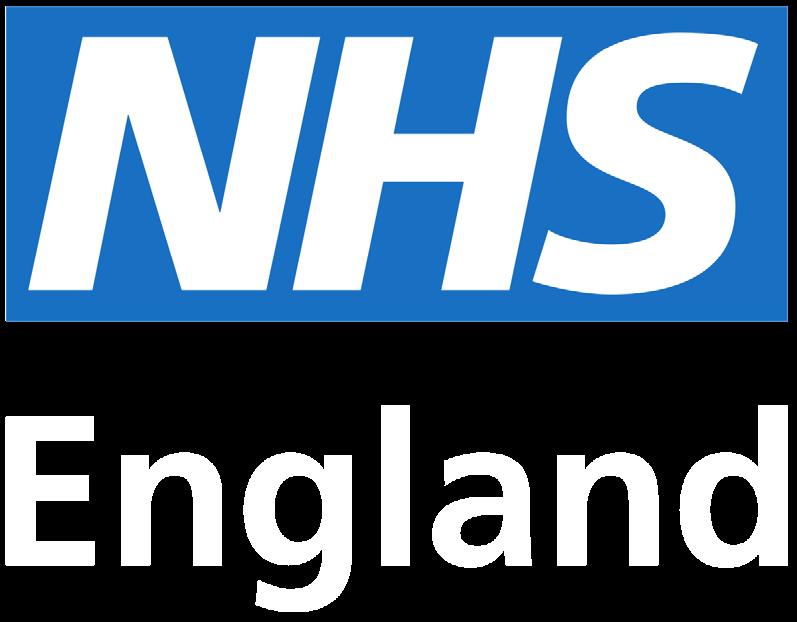

supplychaindigital.com 51
People often say that they fall into procurement. I didn't ‘fall’ into procurement; I made a very definite choice that this was the career path that I wanted to follow.”
These are the words of Jacqui Rock. Rock is NHS England’s Chief Commercial Officer and is spearheading one of the most significant reforms NHS procurement has seen since its inception. It’s a task of gargantuan proportions, but she has the expertise, the vision and the sheer tenacity to get it done through the NHS Central Commercial Function.
The Challenges and Opportunities
Rock points out that the private sector is very much profit-oriented, “especially in financial services, as you can imagine”.
“In the public sector though, we're extremely conscious of taxpayers’ money and of how we spend that money towards the provision of services.”
Beyond these key orientations, she notes that different sectors have different agendas, giving the example of the military (having worked in major programmes across the full military estate for the Army, Navy, Royal Air Force and Joint Forces Command), whose agenda is about protecting the realm.
With the NHS, the agenda is about providing the UK’s population with one of the best health services in the world, and Rock points out that these agendas come with their own particular challenges.
“Over the top of all of those sets of challenges, though, there are also those that we as commercial professionals constantly face – whether that be the challenge of supplier resilience, the supply chain and the availability of goods, the costs of inflation, or our supplier relationships.
“Every sector or industry has challenges that we, as commercial procurement professionals, need to know how to handle.
“The NHS is in a very challenging time right now. We’re in the midst of a difficult winter and COVID-19 is still with us. Then we have the significant impact of the cost-of-living crisis, higher inflation, increasing energy prices and the overall pressure that not only the NHS and our people are feeling, but also pressures that are being felt across the entire country.
The way that I'd like to summarise that is by pointing to Amanda Pritchard, our Chief Executive, who, at the NHS ConfedExpo in June 2022, laid out the priorities for the NHS under ‘the four Rs’.”
Jacqui Rock, NHS England’s Chief Commercial Officer, launched the NHS Central Commercial Function to reform NHS commercial practice through Collaboration, Communication & Partnership – here’s how
52 February 2023 NHS ENGLAND

an image caption supplychaindigital.com 53
Recovery, Resilience, Reform and Respect
“First we have ‘Recovery’,” she says. “NHS staff are moving heaven and earth right now to deliver the Elective Recovery Plan, which is one of our biggest challenges. But this is also the most ambitious catch-up programmes in health service history.”
Where appropriate, and where patients are willing to be transferred, NHS England is implementing programmes to realise those transfers, enabling access to healthcare –not just between hospitals or trusts, but between regions – and is also strongly focused on spreading innovation in recovery and best practice across the entire country.

The second ‘R’ is ‘Reform’, and there are silver linings to dark clouds. “The pandemic supercharged the NHS with innovation,” says Rock. “We started using new drugs, new technologies and new ways of working to treat those with the virus, and to care or all of the millions that had numerous other conditions.”
COMMERCIAL SPEND
The NHS commercial spend is in excess of £30bn per year. It's the largest spend in government

54 February 2023 NHS ENGLAND
JACQUI ROCK
TITLE: CHIEF COMMERCIAL OFFICER, NHS ENGLAND
INDUSTRY: HEALTHCARE
LOCATION: UNITED KINGDOM
Jacqui was previously Chief Commercial Officer, Head of Corporate Services and Transition Director at the UK Health Security Agency. As a member of the NHS Test and Trace Executive Team, she was a driving force behind dynamic and rapid innovation and technology development in the supply chain. Jacqui was formerly director for the Defence Infrastructure Organisation at the Ministry of Defence and was a member of the Cabinet Office Commercial Function. She joined the UK government after 30 years in the financial services industry where she held multiple executive positions in companies including Credit Suisse, JP Morgan, Barclays and Bank of America Merrill Lynch.


The pandemic also emphasised the importance of collaboration between different NHS organisations in the service of patients. Rock emphasises this by noting that traditional barriers were really broken down.
The third ‘R’ stands for ‘Resilience’.
“At NHS England, we're now producing a Workforce Plan, which is going to look at people, skills and training – not just for what we need now, but for what we’ll need in the next five-to-ten years – and look out to the longer term.

“And then, finally, I'll touch on ‘Respect’. Healthcare is about experience, and it's about outcomes – which is why respect is absolutely vital.
“We respect our patients, which means making sure that they are informed and ensuring that they and their families are treated with dignity.
“And, of course, we respect the British taxpayer, which really, also from a commercial perspective, is critically important.
“We’re making sure that we’re spending public money really wisely, and, with all of these challenges, I constantly remind myself of the great public support for having a National Health Service.”
Rock is right. She refers to the recently published Ipsos MORI poll from April 2020, “which showed that 62% of the public feel that the NHS was the thing that made them the most proud to be British”.
NHS England: A Singular Vision
How could one not be proud of this role? Rock’s position is one of great responsibility, and, equally, one that’s a great point of pride – and should be.
Jacqui Rock took on her role as NHS England’s Chief Commercial Officer on 1st of January 2022, and she feels that one of the most gratifying things about working in the NHS has been the people.
This is fitting for a National Health Service whose ultimate goal concerns the wellbeing of people, and in fact, begins with people, is
56 February 2023
carried by people, and ends with people. A truly British and essentially democratic institution –and Rock is instinctively aware of this.
“Regardless of the pressures everybody is under, regardless of the challenges the NHS is facing, as I go around the hospitals, everybody is on mission. Everybody shares the same vision. Everybody wants to do the absolute best they can, even under the most difficult circumstances.
“And, for me, that's been absolutely gratifying. To work in an organisation that actually employs more than 1.2 million people, where everybody has the same drive and the same mission, is incredible.
Carter, Boardman and The Government Procurement Bill
Rock touches on The Carter Review that also took place in 2015, which concerned operational productivity in the NHS.
“It was a real key moment in the journey of NHS procurement,” she says. “The findings in the review changed the way we were recommended to work, and they informed our future ambitions.
Another significant event that occurred in this timeline was the Boardman review of government procurement in the wake of the COVID-19 pandemic, which was published in 2021.
Similar to the Carter Review, the Boardman Review looked at how the NHS works across spending taxpayers’ money and provided some significant recommendations for the future.

Some of its key findings concerned transforming supply chain resilience, integrated roles for commercial and procurement expertise within strategy formation, and, most importantly, procurement strategy as being central to policy making when the NHS are spending government money.
Rock says: “When it comes to procurement – and this also applies to the NHS – this is something I am dedicated to, and very much focused on enhancing and fixing. We have gathered and leveraged all of the lessons and reviews that have taken place to ensure that we deliver on the recommendations through the NHS Central Commercial Function.
“Going forward, in 2023, we've got the launch of the Procurement Bill, which is currently going through Parliament. The intention of the Bill will be to reform the UK's public procurement regime to streamline new procedures, and is intended to save time for public bodies and suppliers, allowing us to promote commercial outcomes and deliver more value for the money.
“The new Procurement Bill is fundamental to the NHS Central Commercial Function, which we’re rolling out so we can ensure that
“People often say that they fall into procurement. I didn't 'fall' into procurement. I made a very definite choice that this was the career path that I wanted to follow”
supplychaindigital.com 57 NHS ENGLAND
JACQUI ROCK CHIEF COMMERCIAL OFFICER, NHS ENGLAND
the NHS is ready and able to procure and leverage the market.”
The NHS Central Commercial Function
In July 2022, Jacqui Rock launched the next evolution of the commercial service offer for the NHS - the Central Commercial Function (CCF), which aims to build a world class commercial community in the NHS. This will help unlock significant commercial opportunities for the NHS including leveraging NHS buying power where appropriate, delivering value for money for the taxpayer, ensuring clinicians have the right products and services they need at the right time, and tackling some of our commercial challenges such as supplier resilience.”

“This wasn’t something that we at NHS England have done alone. After spending months visiting trusts and seeing all the amazing commercial activity that’s taking place across the NHS, we've engaged closely with commercial teams right across the NHS, and have ensured that their feedback was incorporated into the development of the NHS Central Commercial Function.
Our collective ambition is a modern, effective, and efficient procurement function in the NHS that is among the best in the world, one that truly delivers taxpayer value, supports innovation, stimulates growth, and most importantly, delivers the highest quality of patient care.’’
58 February 2023
An overview of the NHS Central Commercial Function's 7 service offerings
Since the launch, Rock and her team have developed a robust programme plan and have governance in place. They’ve really been focusing on putting NHS commercial and procurement teams at the forefront of change, and raising their profile with many of their suppliers.
The 7 service offerings of the NHS Central Commercial Function
The NHS Central Commercial Function is comprised of 7 service offerings, which are already delivering across the system.
1. Commercial Best Practice – Enabling the NHS commercial community to access tools, expertise and cutting edge knowledge to deliver purchasing activities at every level of the NHS.
2. Governance, Assurance & Processes – Endorsed, standardised and complianceassured routes to market that wield NHS influence and promote innovation to deliver government priorities.
3. Technology and Data – Developing and adopting technology that provides the NHS with insight into procurement value and savings opportunities and outcomes. This will help to leverage, rationalise and shape the market.
4. Commercial Strategies – Creating a universal strategy across the NHS with clear commercial activities and routes to market that facilitates ease of doing business.
5. Sustainability & Innovation – Developing an NHS-wide approach to delivering net zero and social value, driving innovation and eradicating modern slavery in the supply chain, enabling stakeholder engagement and application.
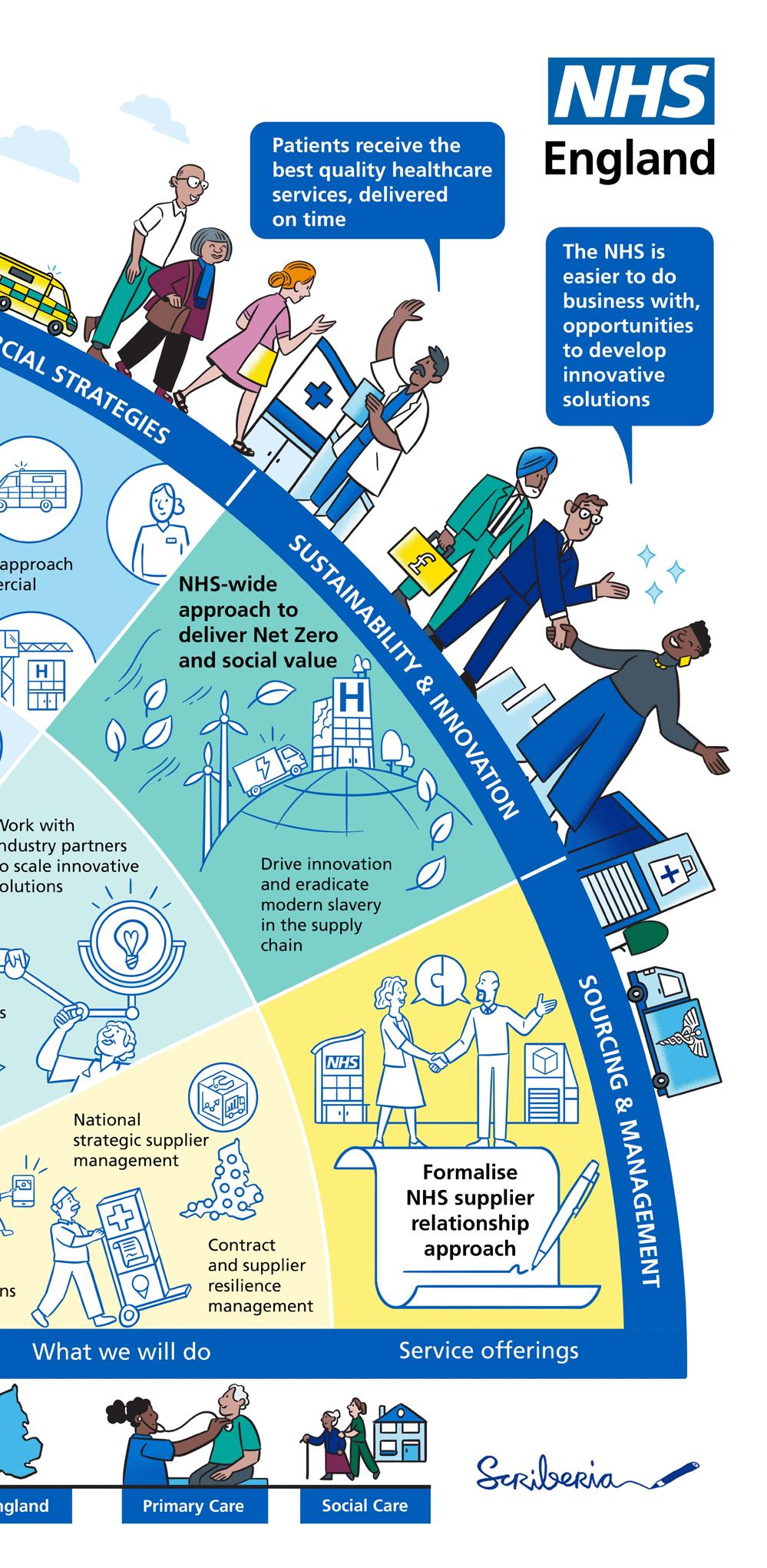
6. Sourcing and Management – Developing a strategic partnership approach that leverages the NHS buying power, shapes the market, drives innovation and resilience in the NHS.
7. People and Community – Embedding a unified community of procurement and commercial specialists who strive to deliver and uphold the NHS Commercial Strategy ensuring best value for money.
supplychaindigital.com 59 NHS ENGLAND
Using a universal ecommerce system
A key deliverable of the Central Commercial Function was introduced just weeks after its launch – and that was the universal rollout of the ecommerce system: Atamis.
NHS England made Atamis available to all health and family organisations, following funding from Crown Commercial Services and working in partnership with the Department of Health and Social Care in July 2022.
It is being used by a range of different organisations across the health family, namely (1) NHS Providers, (2) NHS Integrated Care Boards, (3) NHS CSUs, (4) national bodies (e.g. NHS England, UKHSA) and (5) the Department of Health and Social Care.
Rock says: “So far, 131 health family organisations have onboarded to the platform and nearly 29,000 suppliers have registered on the platform in order to respond to opportunities and manage their contracts with the NHS.”
“The key point of using a universal e-commerce system is that, by the end of the financial year we will have a really detailed view of commercial spend. We will know where we are spending, where the variance exists, and where we are getting better value for money.
“We will have a very good view of our supplier footprint across 220 trusts and thousands of primary care providers, so it's a really key initiative.

“We've got to be data-driven, because, ultimately, service provision is all about the data. Up to this point, it's been very hard to pull data together and actually have that overall NHS view – and this is going to enable us to do that.”
NHS organisations are already seeing the benefits. The London Ambulance Service (LAS) were one of the first to
“The real value of the NHS commercial team is in collaboration. It’s about bringing everybody across 4,000+ procurement and supply chain professionals together, so that we can agree on category strategies and move forward with a single vision”
60 February 2023 NHS ENGLAND
JACQUI ROCK CHIEF COMMERCIAL OFFICER, NHS ENGLAND
onboard. Operating across London out of 70 ambulance stations, LAS has an annual addressable non-pay expenditure of around £150mn and over 340 active contracts valuing over £296mn.
Using a universal e-commerce system has allowed them complete visibility of their pipeline of procurement activity which means that the team can be more proactive with resource planning and plan upcoming procurements in a transparent and consistent manner.
Shaping the Market: Eliminating Waste and Redundant Contracts
One of Jacqui Rock’s key commitments is to implement a strategic supplier management programme to help the NHS to shape and leverage the market.
Rock says: “We should be leveraging the market. We should be able to drive innovation through our suppliers. We must focus on greater resiliency in our supply chain. We want to focus on eliminating waste, and one of the things that I found really enlightening when I came in here, is that we’ve got multiple contracts with the same supplier for the same thing, but with lots of variation.
“This is something that we need to work on collaboratively and in partnership with our big strategic suppliers to discover how we can just simply buy better in the NHS.
“So we've been spending a lot of time listening to suppliers and our key stakeholder Strategic Supplier Relationship Management teams to understand how this presently works and how we can align our strategies to make it as easy as possible to supply to the NHS.”

supplychaindigital.com 61
“Every challenges procurement
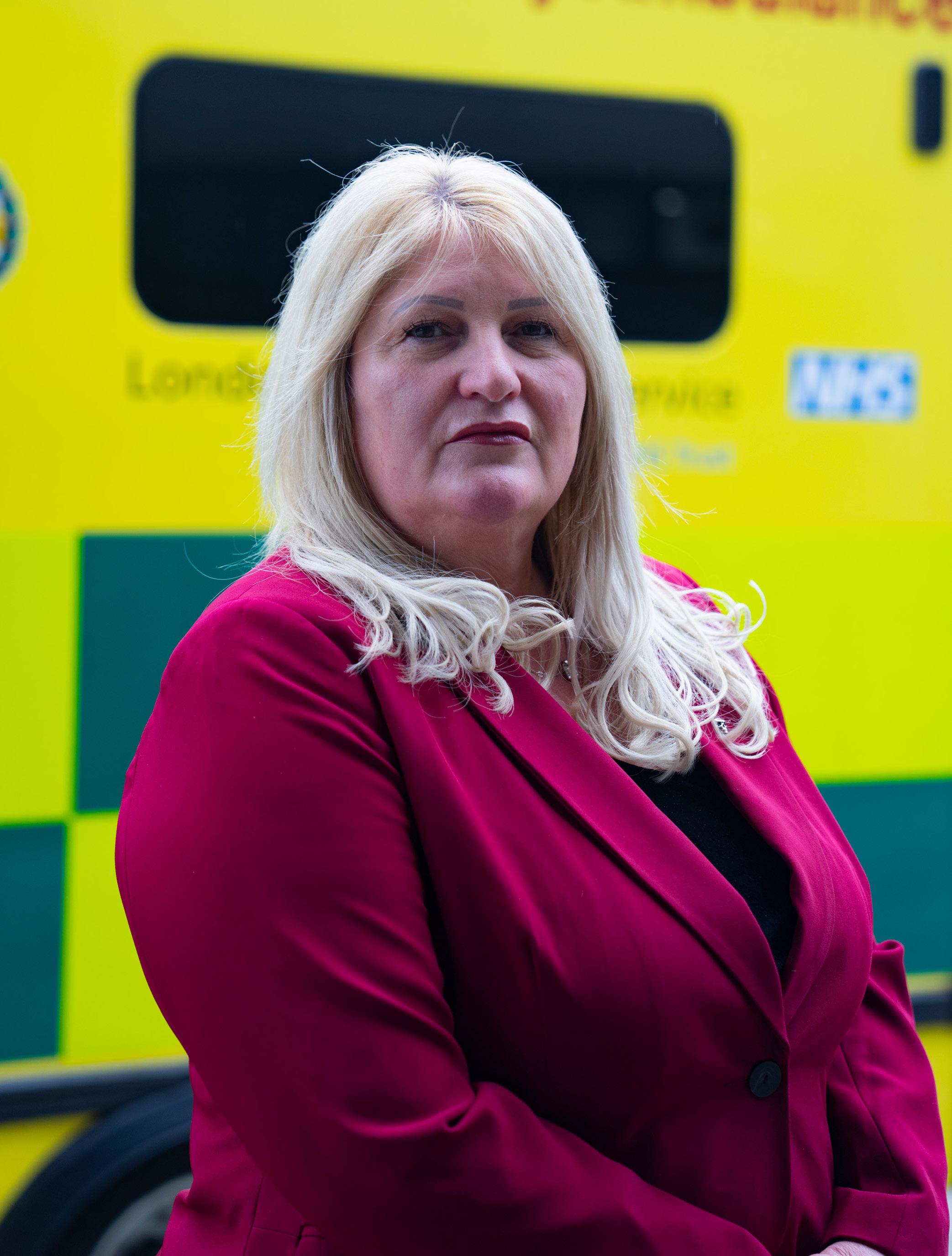
62 February 2023
NHS England's Sustainability Roadmap
In October 2020, the National Health Service published a report called the Greener NHS Report, which announced that the NHS will be net-zero by 2040 and, for its carbon footprint plus, by 2045.
Over 60% of the total NHS Carbon Footprint sits within its supply chain and these include emissions from freight, the manufacturing of goods, catering, business services and construction.
“Our net-zero procurement plans are aligned with government policy,” says Rock. “From April 23rd, the NHS will adopt the government’s ‘Taking Account of Carbon Reduction’ plans PPN, which will require all suppliers of contracts valued over £5mn to publish a carbon reduction plan for their direct missions.
“We have also adopted the government social value model, which ensures that a minimum of 10% waiting on net zero and social value, is included in all tenders; The NHS Central Commercial Function team have been producing detailed guidance to support trusts with this.
“It's a new area for many of the trusts and certainly many of our suppliers, so we've
been ensuring we can deliver that support right the way through this process.”
The Mission: Collaboration, Communication and Partnership
The reason that Rock set up the NHS Central Commercial Function was to take a good hard look at how they buy across the NHS, so that taxpayer money is being spent in the most efficient way. Their commercial spend is in excess of £30bn per year. It's the largest spend in government, and they are spending in a very federated way because the NHS isn't just one organisation. The NHS is already one of the most efficient health services in the world, spending 2p in the pound on administration, compared to 5p in Germany and 6p in France, but Jacqui Rock says that there are opportunities to go further.
“We want to make sure that NHS bodies and trusts have the autonomy to run their hospitals and their clinical pathways.
“But the real value of the commercial team is in collaboration: it’s about bringing everybody across 4,000+ procurement and supply chain professionals together, so that we can agree on category strategies and move forward with a single vision.
“What I am really doing is getting people to work together as commercial professionals.
“It’s about collaboration, it's about community, it's about partnership.
“Our buyers are very gifted – they know what they're doing – but they will be supercharged in their effectiveness once brought out of their silos and enabled to see the bigger picture, for a better, stronger and much more effective NHS.”
“Every sector or industry has challenges that we as commercial procurement professionals need to know how to handle”
supplychaindigital.com 63 NHS ENGLAND
JACQUI ROCK CHIEF COMMERCIAL OFFICER, NHS ENGLAND
RESHORING TAKES HOLD IN FACE OF SUPPLY CHAIN PRESSURES
 WRITTEN BY: SEAN ASHCROFT
WRITTEN BY: SEAN ASHCROFT
64 February 2023
The shape of supply seems to be changing in every conceivable way. It’s becoming less chainlike and more network-based, as businesses seek the sophistication needed to thrive in an uncertain world. Supply chains themselves are also shrinking, with organisations beginning to move away from the cheap-labour strategies that have fuelled the manufacturing boom and rapid industrialisation in South East Asia for the past 40 years.
But those days seem to be drawing to a close, because supply chains that span the globe are too vulnerable to disruption in today’s volatile, uncertain world. Increasingly, firms are looking to reshore and nearshore both manufacturing and sourcing to reduce their exposure to risk.
A recent Reuters Events whitepaper shows just how strong the reshoring trend has become. Produced in conjunction with A.P. Moller-Maersk, the giant Danish shipping company, the paper – called ‘ A generational shift in sourcing strategy’ –is a global deep-dive into near-sourcing, nearshoring and reshoring in the postpandemic world.
It looks at how companies across the world are looking to rebalance their supply chains, reduce risk, increase visibility and improve sustainability.
The paper shows that the countries with the two largest manufacturing workforces,

supplychaindigital.com 65
LOGISTICS
Disruption, uncertainty and inflation are driving businesses to reshore and nearshore manufacturing and retail operations, but at what cost?
There has been more reshoring and nearshoring around the manufacture of semiconductors than any other product, because of the longstanding and ongoing chip shortages
Inform your supply chain resilience planning with our time-measured report series

Ensuring the agility and resilience of your business and supply chain starts with identifying the risks.

Download our report to start your resilience planning today.
Download ASCRI Report
Because
Hindsight
Insight Beats
Germany and Poland, are the most attractive sourcing and reshoring locations.
But the authors also add that there’s a “broad-based commitment” among businesses to source more from within both East and West Europe to reduce the distance to end-market and meet the increasing need to draw on pools of skilled labour.

In the foreword to the paper, Mikkel Søndergaard Rasmussen, Regional Head of Logistics and Services, Europe A.P. MollerMaersk recounts the chaos and disruption of the past two years, including the pandemic and war in Ukraine.
“Global markets have been fragmented and this has left supply chains exposed,” he says,
adding: “Little wonder, then, that companies hold supply chain resilience in increasingly high regard, because the ability to deliver products reliably and on time is increasingly important to their customer-value propositions.”
Rasmussen observes that this has seen sourcing strategies “come under the microscope for many” as the bid for resilience gathers pace. He says: “Resilience doesn’t come without its costs but when set up correctly, logistics can be seen as a business enabler and potential source of competitive advantage, instead of being a financial hindrance.”
This, he continues, means adopting “a less fragmented logistics supplier base and a more integrated, holistic approach across the entire supply chain, together with a trusted logistics partner accountable for outcomes”.

MIKKEL SØNDERGAARD RASMUSSEN, EGIONAL HEAD OF LOGISTICS & SERVICES, EUROPE, A.P. MOLLER-MAERSK
supplychaindigital.com 67 LOGISTICS
“Global markets have been fragmented and this has left supply chains exposed”
REAL - ESTATE DATA CONFIRMS STRONG RESHORING TREND
Data from European commercial property company BNP Paribas Real Estate reveals that the industrial and logistics leasing market has been met with a surge of activity from manufacturing occupiers as they seek to ‘reshore’ activity back to Britain, following the impact of Brexit and ongoing supply chain disruption. It shows that, in 2022, take-up of units of 100,000sqft and above has increased by 53% on 2021 levels. Logistics providers were the most active sector, with a 35% year-onyear increase.
Vanessa Hale, Head of Research and Insights at BNP Paribas Real Estate, said: “There are a number of driving factors behind reshoring, including inflation, Brexit, the pandemic, the Ukraine war and the blockage of the Suez canal, all of which have massively impacted supply chains and overheads.
“As businesses fight harder for space, activity will continue to put pressure on chronically short supply levels.
“Acute supply-demand imbalances of suitable facilities are likely to continue, especially as rising construction costs weigh heavily on future development pipelines.”
Two-thirds of firms say disruption had changed sourcing policies
Some key figures quoted in the paper:
• 67% of global retailers and manufacturers say that global supply chain disruptions have changed where they source materials and components from.

• 58% of those who have shifted sourcing say that further relocation
• remains a high priority, or the top priority, for their business.
• 76% do not expect supply chains to normalise in the next 12 months, following Q3 2022.
• 37% plan to change manufacturing locations.
68 February 2023
The paper says that among the factors fuelling plans to nearshore and reshore manufacturing and sourcing are disruptions to raw materials (70%), shipping (68%), and components or finished goods (63%).
The top five reasons given by businesses looking to shorten their supply chain are: to increase flexibility (65%); to limit reliance on single-sources of materials (57%); to limit operational risk (56%); to reduce transit time (48%); and to increase control over operations (45%).
The paper also looks at how supply chain structure is changing in industry verticals in the face of disruption and uncertainty. It reveals:
The electronics and technology, and automotive, aerospace and machinery sectors have been the most active in changing sourcing locations as a result of disruption.
The electronics and technology sector has been the most disrupted by delays in components.
The fast-moving consumer goods and food & beverage sectors have been the most disrupted by lack of shipping capacity and labour shortages.
The chemicals and chemical products sector has been the most disrupted by delays in raw materials, inflation and delays in shipping.
Turning its focus to regions, the paper reveals that North American supply chains are the most internationally focused, containing the smallest number of supply chains saying they source only in their home region.

North American respondents are, as such, more likely to face labour and factory capacity shortages than in Europe or Asia-Pacific.
Asia-Pacific, meanwhile, has been hardest hit by shipping complications, the paper reveals, which reflects ongoing COVID shutdowns in the region, especially in China.
MIKKEL SØNDERGAARD RASMUSSEN, EGIONAL HEAD OF LOGISTICS & SERVICES, EUROPE, A.P. MOLLER-MAERSK
supplychaindigital.com 69 LOGISTICS
“Logistics can become a business enabler and a source of competitive advantage”
Future supply chains ‘will look very different’
The paper concludes: “Future supply chain logistics will undoubtedly look different from today’s offerings, as supply chains start to move closer to the end consumer, with fewer intermediate parts traded over long distances.”
It continues: “While it is still unclear how pervasive nearshoring will be, heightened uncertainty has already impacted supply chain decisions in some sectors.
“Multi-sourcing and changes in inventory management will become more widespread and will need to be supported by new and more holistic logistics offerings, to manage complexity and cost.”
The paper also says that integrated logistics and fulfilment strategies “will be in even
sharper focus in order to meet consumer demand for flexibility, speed and reliability across a widening range of delivery channels”.

In conclusion, the paper says that outcome-based, long-term logistics partnerships are needed “to deliver seamless, cost-effective and resilient supply chain solutions based on widely accepted ESG standards”.
Cost is driving retail towards reshoring strategies
But it is not just industrial manufacturing that’s seeing fundamental changes to supply chain strategies; retail supply chains are also shortening as brands look to cut costs.
In a recent study conducted by global e-commerce fulfilment platform ShipBob, it was found that 40% of British brands are
70 February 2023
LOGISTICS
planning to manufacture domestically in response to the cost of shipping to the US rising by 30% in just twelve months. The findings were drawn from a survey of 750 UK brands.
While cross-border commerce has traditionally been the engine for rapid ecommerce growth, rising shipping costs are causing many smaller UK brands to prioritise operations closer to home, the ShipBob study shows, and it’s a similar story across much of Europe and North America.
When asked to name measures that would best drive business growth over the next 12 months, 38% said moving manufacturing operations from overseas to the UK to avoid import challenges and rapidly rising freight costs.

Enda Breslin, ShipBob EMEA General Manager, warned that spiralling
shipping costs are “strangling the growth of the UK’s e-commerce entrepreneurship sector”.
He added: “While it’s understandable many will look to protect their bottom line by focusing inside British borders, it means brands won’t scale as fast as they should.”
Breslin went on to say that small brands should still “look to expand ambitiously” but that they should seek to do so “in a resilient way”, such as by making use of their ecosystem of ecommerce partners.
“Choosing fulfilment partnerships carefully will help small brands position themselves closer to their overseas customers, and level the playing field with local competitors when it comes to shipping speed and cost.”
supplychaindigital.com 71 LOGISTICS
A modern procurement platform for today’s business



72 February 2023
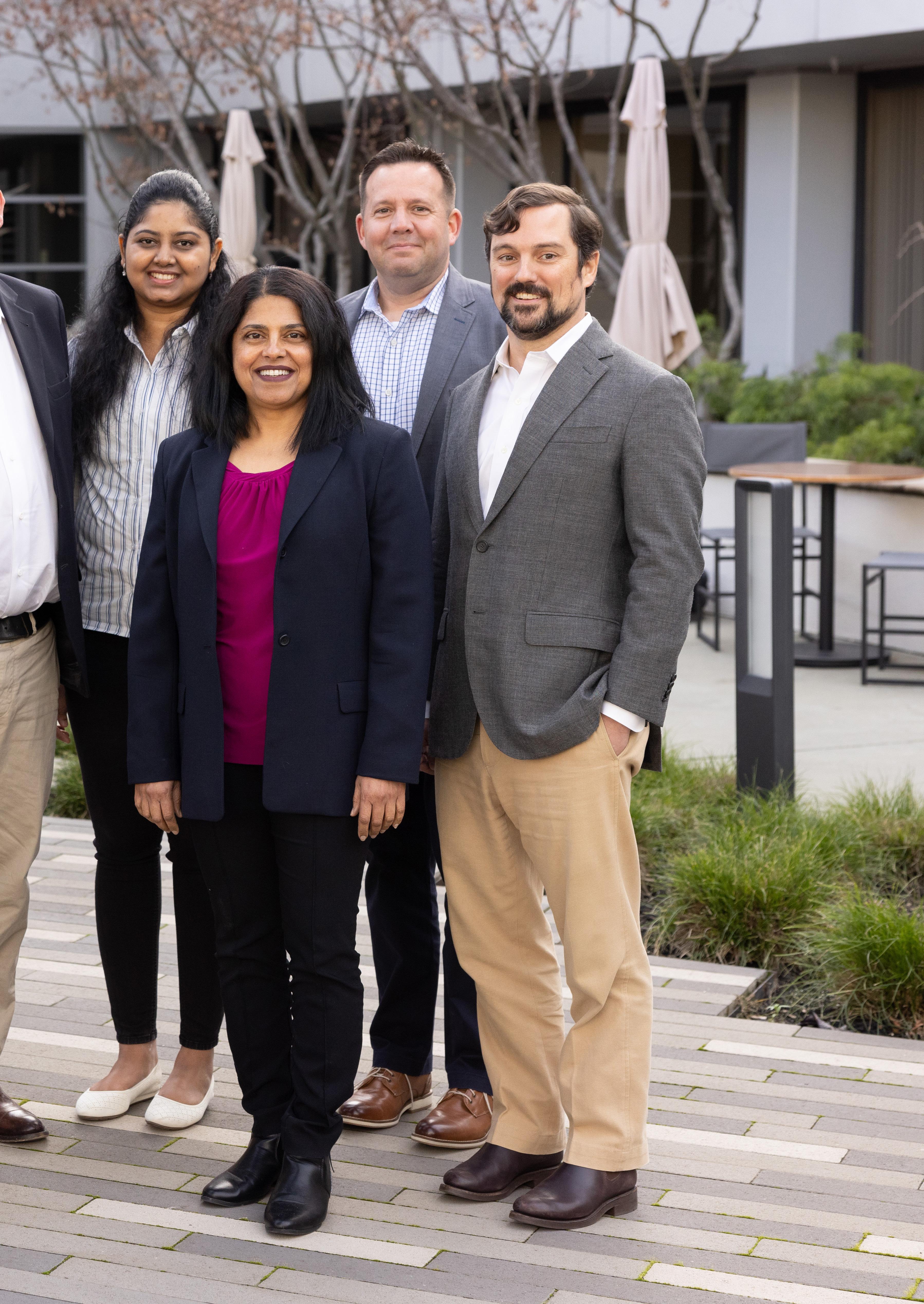
supplychaindigital.com 73
PRODUCED BY: MIKE SADR
IQUANTUM
WRITTEN BY: ILKHAN OZSEVIM
iQuantum is a global technology platform that uses AI & ML to enable innovation and procurement focusing on supplier diversity and ESG
Hetal Mehta is the founder and CEO of iQuantum Inc., a modular, modern procurement platform. As the leader of iQuantum’s woman and minority owned business, Hetal works closely with all internal teams, customers, partners, and the iQuantum Advisory Board of industry champions and practitioners.
Hetal Mehta’s journey into the industry
For many years, Mehta worked as a developer and consultant to procurement teams. Through that experience she recognised the need for a more sophisticated and user-friendly procurement solution, “one that does all the efficient and effective consolidations, automation and workflows – but also helps guide alignment between buying decisions and larger strategic corporate goals like increased diversity,” she says.
“My in-depth experience and understanding of supplier diversity led me to realise that customers struggle with finding appropriate suppliers and are prone to continuing business with existing ones – even if that is not ideal.

“With iQuantum our goal is to leverage machine learning and AI to provide a modern procurement platform with access to the largest global supplier database that includes diverse and sustainable supplier options. This helps customers build a more resilient and robust supply chain.”
iQuantum’s unique selling point
iQuantum Inc. is a modern Source-to-Pay platform designed to meet today’s procurement needs for Supplier Relationship Management, Diversity and ESG Sustainability tracking and reporting. They provide the tools and transparency to align spend decisions to strategic corporate goals.
74 February 2023
IQUANTUM


supplychaindigital.com 75
HETAL MEHTA CHIEF EXECUTIVE OFFICER, IQUANTUM
Mehta says: “There is no single provider on the market who competes with us pinto-pin.” iQuantum is the only SaaS platform to provide:

• Complete Supplier discovery to Pay on one platform WITH modern ESG and full diverse supplier management.
• New supplier discovery from a database of millions of global suppliers to increase supply chain resilience and support new product introduction (NPI) sourcing
• Integrated supplier communication and collaboration with in-built Chat and conversation storage for future reference and context

• Modern approach to complete strategic sourcing for indirect, direct and new product introduction with internal team collaboration
• Rich contracts, procurement, and spend management analytics
• Integrated Tier 1 & Tier 2 Diversity and ESG Sustainability reporting and benchmarks
76 February 2023
“Prioritising diversity in your employees and your supplier base as a part of ESG is integral to the growth and future trajectory of the company – employees, leadership, investors, stakeholders, and customers seek brands that are improving their profiles”
• Government and Customer reporting along with Subject Matter Expertise by fine-tuning their diverse spend tracking and achieve the elite Billion Dollar Roundtable or BDR
• Diverse and small supplier visibility to iQuantum’s Fortune 500 customer base, including support for supplier marketing of their products and catalogues

• Modular licensing approach and enterprise interoperability to accommodate each customer’s needs, budgets, and existing system investments
• Single code base for quick implementation, easy maintenance, and simple configuration with a sophisticated, userfriendly user experience
• Access to global database of suppliers including diverse/non-diverse and green suppliers for procurement to add to supply chain and achieve savings
• Better alignment, reduced risk, and increased compliance across procurement, finance, and corporate legal
HETAL MEHTA
TITLE: CHIEF EXECUTIVE OFFICER
LOCATION: IQUANTUM
Hetal holds a BS in Electrical Engineering, and, prior to founding iQuantum, she logged more than 15 years of IT consulting experience with financial firms on Wall Street. Her technical background combined with her sharp domain expertise has been instrumental in building iQuantum; engaging industry-leading customers, attracting and mentoring top engineering talent, and delivering top-class business results, she has driven iQuantum’s growth over the years. Hetal Mehta has been recipient of Steve Awards and Women of the

IQUANTUM
HETAL MEHTA CHIEF EXECUTIVE OFFICER, IQUANTUM
The importance of diversity in procurement and supply chain and the role of iQuantum McKinsey reported that working with diverse suppliers leads to an 8.5% in cost savings, which is more than the 3 - 7 % savings most procurement organisations realise.

“Prioritising diversity in your employees and your supplier base as a part of ESG is integral to the growth and future trajectory of the company – employees, leadership, investors, stakeholders, and customers seek brands that are improving their profiles,” says Mehta.
Qualified diverse suppliers bring savings and better service to customers. Procurement leaders have recognised this, and are looking at ways to increase their diverse supplier base (increasingly Tier 1 and Tier 2 diversity reporting is becoming a mandate across different industry verticals).

78 February 2023 IQUANTUM
“Every purchase made needs to be aligned to strategic corporate goals and help to move the needle. Increased government regulation and consumer scrutiny of corporate brand spending has increased the need for a new procurement approach”
She says: “We see these two tiers in Manufacturing, and in Law firms it typically comes from customers setting goals to win RFPs, while for the Healthcare and Pharmaceutical industry the stimulus comes from the government and encourages organisations to negotiate diversity goals and to report them annually.”
iQuantum’s automated customer and government reporting solution is helping customers achieve this. “This automation,” says Mehta, “and our in-depth subject matter expertise in exclusion criteria rules, is also helping customers achieve their goals and get on to the prestigious Billion Dollar Roundtable BDR. Our global database of suppliers allows customers to source from new diverse suppliers to meet their goals.”
How iQuantum tackles modern business challenges

Businesses today need help driving alignment across divisions and teams. Core brand values and strategic goals need to be surfaced in all corporate decisions – but most importantly in spend decisions. Mehta says: “There is a critical need to meet the diversity spend and ESG sustainability goals being set by leadership and closely tracked by government regulators and investors.
“Our customers like to work with us due to our commitment to customer success, our responsiveness to customer needs and our budget-friendly pricing.” This approach relates to the findings in the McKinsey report concerning better savings and an enhanced overall experience when working with diverse suppliers.
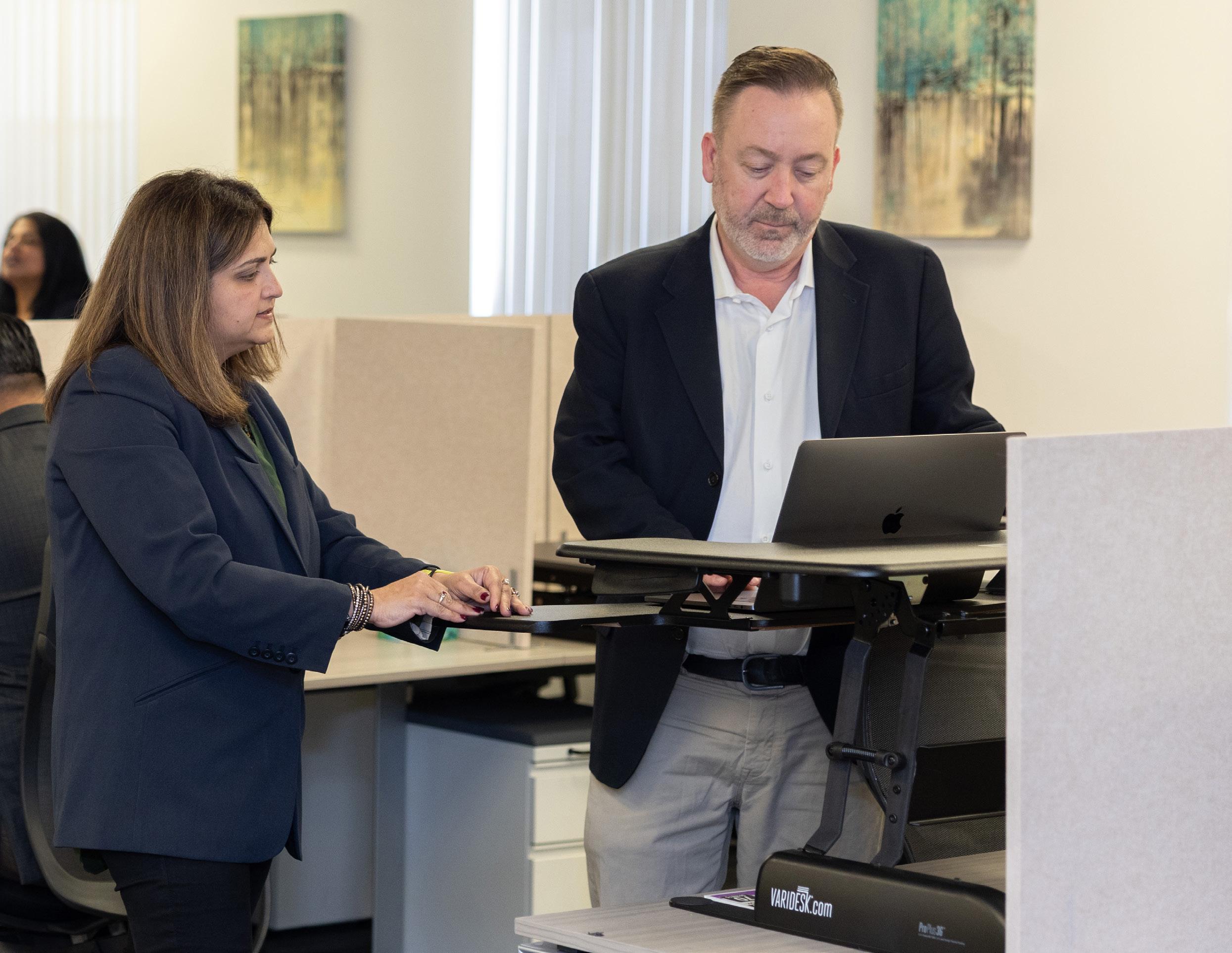
supplychaindigital.com 79
iQuantum: A modern procurement platform for today’s business
Supporting women-owned businesses
iQuantum has subject matter experts to partner with diverse businesses (women, minority, veteran, disabled, LGBT) around the globe to provide guidance on the certification options and process; enriching their supplier profiles to maximise their reach and relevance to upcoming RFQs (Request For Quotes) RFPs (Request For Proposals) and RFIs (Request For Information), or Direct Material Sourcing.
Mehta says: “We also assist certified businesses in getting catalogue-ready, to simplify enterprise purchasing of their products. Our regular supplier outreach, newsletter supplier spotlights and social media channels promote and support women, minority, and other certified businesses. It’s part of our mission and our DNA.”
Adapting to procurement developments


Procurement needs today have changed. They need a platform which addresses
McKinsey reported that working with diverse suppliers leads to an 8.5% in cost savings, which is more than the 3-7% savings most procurement organisations realise.
80 February 2023
IQUANTUM
HETAL MEHTA CHIEF EXECUTIVE OFFICER, IQUANTUM
today’s modern challenges of Diversity and ESG Sustainability tracking. “Every purchase made needs to be aligned to strategic corporate goals and help to move the needle,” Mehta says.
“Increased government regulation and consumer scrutiny of corporate brand spending has increased the need for a new procurement approach.”
“Customers benefit from our “Only Buy What You Need” approach which helps them avoid paying for unused functionality. Our rapid onboarding makes the user experience better and decreases the time to ROI.”
“If you are looking for a modern modular procurement platform to meet today’s procurement needs, iQuantum is the solution.”


supplychaindigital.com 81 IQUANTUM
“Our customers like to work with us due to our commitment to customer success, our responsiveness to customer needs and our budgetfriendly pricing”
Quantum’s Strategy
iQuantum’s Strategy is best seen according to 3 main facets -
1. For Diversity, their approach is two-fold. Firstly, they want to help companies find, on-board and buy from diverse suppliers easily. Secondly, they aim to help diverse suppliers gain exposure to potential customers by giving them a platform to market their products and services

2. For ESG, iQuantum’s goal is to help make this an integral part of the company and not just an afterthought to meet reporting requirements. For example, they help companies assess their GHG emissions footprint early in their product development when designing new products or building new facilities
3. For Source-to-Pay, iQuantum’s goal is to make the entire process seamless. They provide a single platform upon which companies can execute all aspects of procurement, ie Finding suppliers (Q-Discovery), Qualify (via RFx and Direct Material Sourcing for Manufacturing), Onboard (Contracts), Procure (Order Management), Monitor (SRM), and Control (Spend Analytics), but also allow modular consumption. They also aim to help companies preserve their existing investments, if they require, by integrating with any systems they may already have installed
iQuantum’s outlook for the future
The Diversity market is moving from being driven by government mandates, to one where it is an integral part of company strategy. Mehta believes that iQuantum is, “in the early stages of realising the full potential of this market.”
She says: “For ESG, this is truly a nascent but swiftly developing market.
Companies simply don't have a good way of assessing their GHG footprint, and we are one of the few solutions that can help them achieve this. We see considerable promise in helping companies assess their environmental footprint.”
In the Source-to-Pay space, iQuantum’s customer conversations have proved that legacy procurement providers are not only unable to meet today's modern business requirements, but also have yesterday's UX. Mehta says: “We are solving this problem.”

82 February 2023
IQUANTUM
Finally, on the subject of regulations, Mehta says: “There are regulations going into effect and being defined every single day. We are keeping a constant eye on any changes that may impact rules, reporting, and best practices.

“iQuantum always keeps the SEC, SBA, CDP current, and up-to-date, helping customers to adapt and remain agile to the changing environment.”

HETAL MEHTA CHIEF EXECUTIVE OFFICER, IQUANTUM
supplychaindigital.com 83
“There is no single provider on the market who competes with us pin-to-pin”
CLIMATE IS ILL WIND THREATENING
Climate change is an ever-increasing threat, as extreme weather events hit supply chains with greater frequency. Here, we look at how firms can mitigate risk around Mother Nature
 WRITTEN BY: SEAN ASHCROFT
WRITTEN BY: SEAN ASHCROFT
84 February 2023
SUSTAINABILITY
CHANGE THREATENING SUPPLY?
For those who manage risk in supply chains, climate change is becoming a weightier problem by the minute. A recent major study of 12,000 suppliers in the United States, China and Taiwan measured climate-related risks being faced by around 100 original equipment manufacturers (OEMs) in the high-tech, auto and consumer goods industries.
The Harvard Business Review study suggests just 11% of suppliers are fully prepared for weather-related disruption. The study also found half (49%) of the

surveyed US companies had experienced an increase in climate volatility, with this figure jumping in China and Taiwan to a massive 93%.
The reality is that as climate change worsens, we will face more-frequent and severe extreme weather events, including hurricanes, tsunamis, forest fires, and floods. Inevitably, these will interrupt production, increase sourcing costs, and cut into corporate revenue.
Take hurricanes – or typhoons, as they are known in South East Asia: these are
supplychaindigital.com 85
MEDIA SALE The connected supply chain turns volatility into opportunity.

The e2open connected supply chain platform provides the end-to-end visibility and collaboration you need to tackle unpredictability. Build trust and confidence with your channel, supply, logistics, and global trade partners. Take control of supply constraints through direct procurement and meet customer commitments in the face of disruptions and scarcity. The connected supply chain. Moving as one™. www.e2open.com E2open and the e2open logo are registered trademarks of e2open, LLC, or its affiliates.
among the most frequent extreme-weather events and can be particularly devastating. As a 2020 McKinsey report points out, the probability of experiencing a hurricane sufficiently intense to disrupt semiconductor supply chains in Taiwan, South Korea and China is set to quadruple by 2040.
Hurricanes among worst supply chain disruptions
Hurricanes damage critical infrastructure, such as roads and power, and can destroy

manufacturing assets, including buildings and specialised equipment.
Such destruction inevitably leads to a spike in the cost of labour, energy, and logistics – at a time when cost inflation is rampant anyway. And this combination of factors chokes cash flow, which is the oil that lubricates global trade.
Further research from the United Nations’ Development Programme shows that workplace and corporate disruption from climate change could total US$2.5tn by 2030 in the US alone.
Organisations that fail to legislate for climate change-based disruption to their supply chains are asking for big trouble. Managing such risk has never been more important. Helping businesses on this front is New York-based Skyler Chi, Global Head of Third Party & Supply
SKYLER CHI
GLOBAL HEAD OF THIRD PARTY & SUPPLY CHAIN RISK MANAGEMENT, EXIGER
Flooding in Thailand
supplychaindigital.com 87 SUSTAINABILITY
“Adapting to climate change is a dramatic evolution – not like the usual adaptive change businesses have to make”

88 February 2023 SUSTAINABILITY
Saint-Malo in Ille et Vilaine in Bretagne during high tide
Five tips for mitigating climate change risk

1. Integrate tech systems
Climate monitoring and predictive tools can allow for decades of data to be put to use in specific sites and locations, allowing users to understand essential vulnerabilities and risks. Such systems are most powerful when marshalled by experts who can interpret climate data and provide actionable, real-time guidance.
2. Rethink manufacturing
Taiwan is the biggest manufacturer of computer chips and is one of the most seismically active areas in the world. It is also prone to typhoons. China, a manufacturing powerhouse across most sectors, is not only prone to extreme flooding, but is still dipping in and out of COVID-19 lockdowns – with little sign that this will change any time soon. Reshoring manufacturing from volatile areas to less volatile ones nearer, or at, home can mitigate risk.
3. Have the right mindset
Every business should have an ‘awareness statement’ as well as a mission statement. Such a statement should recognise that the supply chains of the future need the interdependency, interconnectedness and the intelligence to
predict disruption before it occurs. This is pretty much the silver bullet of global logistics, and the approach must be embedded as part of company DNA so that the necessary thinking is in place to pave the way for visibility and automation solutions.
4. Manage upstream risk
A weakness of many business continuity plans is that they often focus solely on nearby locations. Proactively managing supplier networks can allow businesses to more quickly identify alternative sources, as well as switch to new suppliers more efficiently.
5. Collaborate with suppliers
Companies can contractually insist that suppliers include business continuity plans – and they should. Suppliers are vulnerable not only to disruption from weather events but from all manner of things, including intervention from regulatory bodies and also environmental laws. Backup plans, alternative production sites, and recovery timeframes should all be in place. To ensure this is the case, collaborate with suppliers and help them understand their vulnerabilities to disruption. Supplier contracts should also insist business continuity plans are tested annually.
“Companies can shorten supply chains by shifting production to domestic facilities or nearby countries”
SKYLER CHI GLOBAL HEAD OF THIRD PARTY & SUPPLY CHAIN RISK MANAGEMENT, EXIGER
supplychaindigital.com 89
Chain Risk Management with risk management specialists Exiger, who says ground-zero in handling climate change is to “educate your entire organisation”.
Adapting to climate change is no small thing Chi says that adapting to climate change is a dramatic evolution from the usual adaptive changes businesses have to make, which are smaller in scope, scale, and impact.
“We’re talking about transformational change,” he says. “And this is a significant departure from the status quo.”
Chi advises that, as an initial step, organisations culturally prepare their employees about the importance of climate change impacting their supply chains.

“Every employee – from CEOs setting the tone at the top to individual managers individually assisting their teams – must recognise and understand the importance of climate change and that the need to adapt is critical,” he says.
Businesses need climate-focused priorities' Chi also advises that businesses set clear, climate-focused priorities. “The best way to eat an elephant is one bite at a time,” he says, pointing to the fact that dozens of organisations who are recognised as standard bearers on climate regularly publish complex sets of climate-specific guidelines.
“To assess climate change risk, have a clear set of priorities,” he says. “Is your organisation looking to reduce its carbon footprint? Are you more concerned with potential supplier outages in high-risk regions, such as the South China Sea? Is your just-in-time inventory management for critical components at risk of disruption?” Chi adds that performance on key priorities must also be measurable. Here, he points to
90 February 2023
SUSTAINABILITY

“Digital twin technology can be used for impact assessments of various climate-driven events”
SKYLER CHI
GLOBAL HEAD OF THIRD PARTY & SUPPLY CHAIN RISK MANAGEMENT, EXIGER
supplychaindigital.com 91
Forest fire, Lake Hughes, United States
the Task Force on Climate-related Financial Disclosures (TCFD), which is just one among many initiatives that calls for corporate disclosures of climate-related physical risks.
The guidance also provides resources to guide climate-related risk assessment and disclosures, which can focus a business’s climate-focused priorities.
Data is also vitally important in the managing of climate risk, according to Chi. “Use a data-driven process to map your supplier ecosystem to multiple tiers and criticality thresholds,” he advises.

“Companies without supply chain risk management visibility and strategy lack the insight to anticipate risk across their extended ecosystem. Your organisation must know if highly interconnected supply chain networks are exposing your organisation to risk that may severely affect operations.” As such, Chi advocates for visibility on ecosystems to reach at least three tiers of the supply chain.
Progressive enterprises model climaterelated supply chain shock scenarios as a form of preparation and training, says Chi. “This allows them to prioritise the extent of supply shocks and determine how to mitigate, going forward. Organisations that have mapped their supply chains and prioritised risk scenarios can model high-risk disruption events into their ecosystem.”
Digital-twin tech vital for impact assessment
Chi believes digital twin technology can also be used for impact assessments of various climate-driven events, such as fires, floods, and tectonic events. “Today’s risk scenarios consider several, product-specific inputs, such as supplier network reliance, financial cruciality, product-specific complexity, and supplier resilience.”
Chi goes on to explain that, in general, supply chain risk-mitigation strategies are categorised as ‘bridging’ and ‘buffering’, and
92 February 2023 SUSTAINABILITY
that it is important to understand the distinction.
“‘Bridging’ means bridging the gap with suppliers to make sure communication is strong prior to, during, and after any type of crisis including climate-related events.,” he explains. “Supplier questionnaires can be created, to ensure that suppliers have risk mitigation strategies in place, while other forms of direct and indirect communication can help bridge the communication and knowledge gap between buyers and suppliers at every tier.”
Buffering, meanwhile, is having adequate inventory reserves in the event of primary suppliers being hit by climate-driven disruption events. “Buffering strategies can be applied against suppliers that are above your risk-scenario thresholds,” he says. “This will reduce the potential harmful impact of climate change.”
In addition, buffering strategies might include dual-sourcing critical materials from different geographic regions, so that if one breaks down, the other will prevent shortages.
“As an added benefit,” he says, “companies can support their domestic industries and shorten their supply chains by shifting production to domestic facilities or nearby countries.”
“In many cases, the cost of production relocations to less risky locations are far offset by the ESG-related risks of keeping production within higher risk regions.”

Ultimately, Chi says, buffering should “act as a shield at different degrees and levels”.
“Buffering strategies designed to protect you from climate-specific disruptions can also be intentionally designed to support your organisation’s other ESG goals,” he concludes. “For example, choosing buffering strategies with a significantly reduced carbon footprint.”
supplychaindigital.com 93
Aftermath of hurricane in Florida Keys, United States
Helping the helper transform
WRITTEN BY: ILKHAN OZSEVIM
PRODUCED BY: CRAIG KILLINGBACK
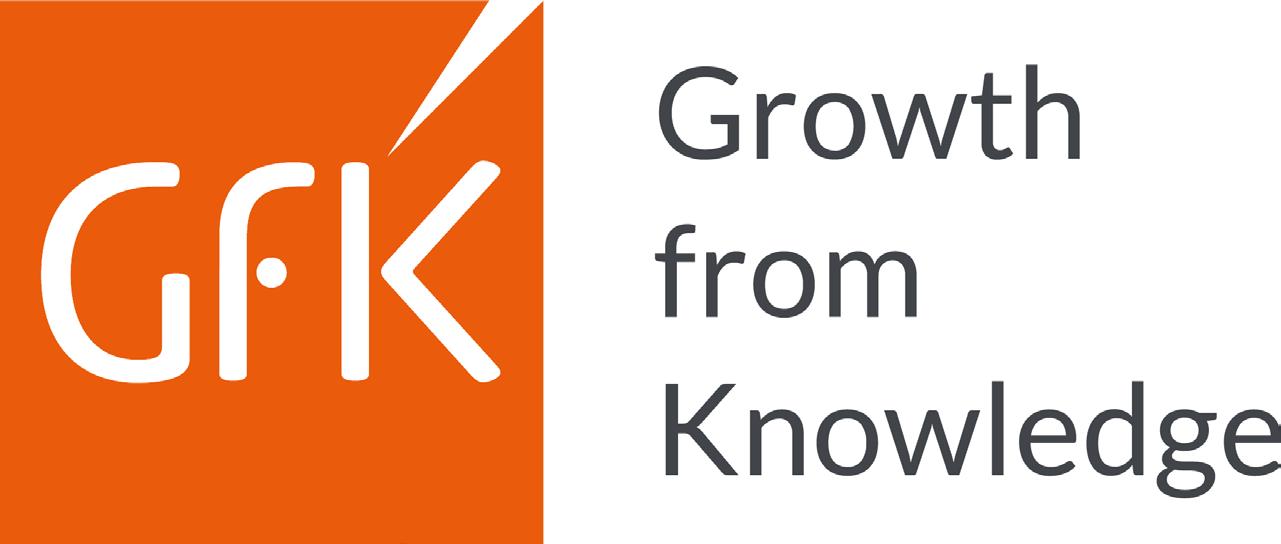

94 February 2023

supplychaindigital.com 95 G f K
Suki Becker, Vice President Procurement and Real Estate of GfK, led both GfK’s procurement and sustainability transformations. Here’s how she did it…
Suki Becker is Vice President for Procurement and Real Estate at the independent, trusted and unparalleled tech- and data-company, GfK.
For over 25 years, she has been working in the procurement and supply chain world and in her last few roles, has been responsible for the transformation of indirect procurement. Becker has a degree in Procurement & Supply Chain Management and has been a member of CIPS since graduating – in other words, she has procurement in her bones.
Becker started out as a Production Planner working in Automotive, where she learnt lean processes and management before becoming a Lean Consultant, and then moved to Procurement over 18 years ago.
Coming from a manufacturing background and never having worked in a service industry before, Becker “was really interested to understand how this industry works compared to manufacturing”, wanting to “understand some of the challenges of the service industry”.
Now VP for GfK, she understands the challenges more than most.
A sophisticated tech- and data-company, present in over 60 countries, GfK helps their clients solve critical business questions in decision-making processes around consumers, markets, brands and media. They also provide reliable data and insights through advanced AI capabilities at their foundation. But it doesn't stop there.

96 February 2023 G f K

supplychaindigital.com 97
GfK: Helping the helper transform

GfK have revolutionised access to real-time actionable recommendations that drive marketing, sales and the organisational effectiveness of their clients and partners.

‘A marketing company is a marketing company’, they say. But GfK stands apart from its competitors due to four crucial factors:
• Trust: GfK have one of the highest competences with data management and quality
• Signals from the noise: They provide actionable and measurable recommendations through analytics and technology
• Knowledge and expertise: GfK have a deep understanding of the market – as well as of psychology and consumer behaviour – having been around since the 1930s
• Always-on intelligence: GfK also offer digital solutions that put data science at the fingertips of clients, giving them a substantial advantage over competitors
“I wasn’t concerned about having one supplier for everything - but with having the right tools at the right cost for GfK”
98 February 2023 G f K
SUKI BECKER VP PROCUREMENT & REAL ESTATE, GfK
How GfK reorganised its procurement and real-estate functions
Becker joined GfK in November 2020, when their procurement and real estate had already been combined under a single function.
“However, I realised that there were category teams, as well as some regional teams and 25 direct reports,” she says.
“Some roles, job descriptions and titles were not defined accurately enough. So, I spent time revising all the job descriptions and titles so that we had the same across categories and countries, then worked with HR to standardise the grading and work on a career path that helped individuals understand what they need to achieve to develop themselves. In order to further support their career journey, I invested in a digital learning program which is accessible to every employee in Procurement. This not only gives my team full access to professional training on core Procurement skills like negotiations, contracting and stakeholder management but includes focussed modules and certifications on Sustainable Procurement which is equally important for us”.
Becker created a category structure for GfK’s procurement functions and changed the roles of the regional heads, making them not only responsible for procurement, but also real-estate and facilities.
Introducing new procurement tools
Two years ago, GfK had several different contract databases for leases and also the way of storing contracts was different. The company then streamlined these by moving to a modern building lease contract database.
At the same time, GfK executed a tender for the procurement contract database to enable a single, integrated system for storing
SUKI BECKER
TITLE: VICE PRESIDENT
PROCUREMENT & REAL ESTATE
LOCATION: SWITZERLAND
Suki has led Procurement and Real Estate at GfK since November 2020. She lives and works in Switzerland and has worked in Global roles for the past 12 years. She started her career working in Logistics as a Production Planner in the Automotive Industry and continued to move industries, transitioning to Procurement over 17 years ago. Suki has worked in UK’s Ministry of Defence, UK Nuclear Energy, Pharmaceuticals, Industrial Engineering and Market Research, working within

EXECUTIVE BIO
Engineering
modern business
human insight at superhuman speed
Staying ahead in a fast-changing world can be challenging for businesses.

Read how Cognizant supports GfK in becoming a future-ready, modern business by building a scalable global delivery model with realistic delivery capacity and business SLAs/KPI driven operations. Learn more
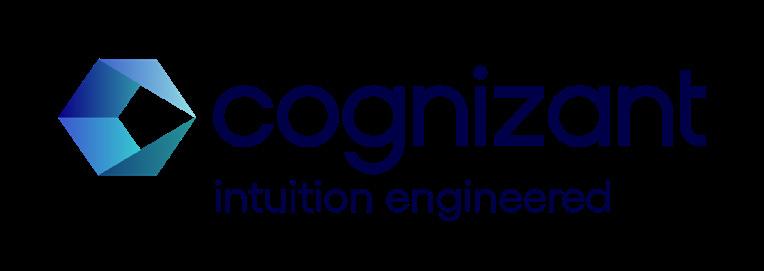
–
Cognizant’s diligently curated GfK modernisation partnership
Cognizant’s Anuj Seth – Chief Delivery Officer, Central Europe – discusses the company’s partnership with GfK, transforming for the modern age & sustainability
Most businesses are setting internal net-zero emission stakeholders and futureCognizant, it is time to take responsibility.
The company, which works alongside businesses to provide advisory and practical IT aid, is not only partnered with some key global businesses to offer assistance in digital transformation and other IT services to achieve net zero, but is also looking to mitigate its own operations and achieve the standard by 2030.


Net-zero initiatives at Cognizant include investing in renewable energy and increasing energy efficiency. Cognizant is ready to meet this target, with Anuj Seth certain they’re on course. Seth has over 20 years of experience in Europe’s
IT outsourcing industry, joining Cognizant in 2014. He’s currently Chief Delivery Officer (CDO) for the Central European region – the second biggest outside the US.
“I have held multiple leadership roles. In my current role, I am responsible for client delivery in Central Europe,” says Seth. “Cognizant engineers modern businesses and helps clients modernise their technology. We help our clients do what others can’t: operate with human insight, but at superhuman speed. So they get ahead, and stay ahead.”
Many businesses Cognizant works with are navigating their own net-zero ambitions, so the company is developing sustainable solutions for those global clients seeking to minimise their own carbon footprints – which is where Seth is keen to lead the change.
Partnership with GfK Cognizant has had a partnership with GfK since 2018. The two are working together in the development and support of core business applications like SAP and Salesforce, as well as applications supporting other business processes.
“We provide a global and scalable delivery model that isn’t just cost efficient, but that also helps GfK reduce time to market,” says Seth.
“We are part of their core IT team, supporting various transformation and modernisation programmes,” said Seth. “We are supporting GfK with specialised knowledge on application rationalisation and assessment; cloud transformation; leveraging domain knowledge in Information Media; and working to drive the realisation of the goals (of Gateway initiative).” Learn
more
contracts, which are now readily available to the team; an e-sourcing tool to move away from email exchanges with suppliers; and a supplier-management tool, where they could send questionnaires to the suppliers and collect data relevant to their onboarding onto their system.
“The utmost goal was having the right tools at the right cost for GfK.”
People and processes over tech is true transformation
Becker says that, presently, there are a number of procurement people that concentrate on systems integration, thinking that procurement can be sped up if they just have the right system in place.
“I think that before jumping to a system solution a company needs to have the right processes in place first.
“One of the transformations that I brought about at GfK was to look at our procurement processes and deliverables, regardless of the system that was being used.

“Standardising and stabilising processes is far more important than the actual systems that are used. I would recommend doing this first and then introducing tools to support.”
The GfK supplier ecosystem and methods of differentiation
Like many other companies, GfK differentiates between their suppliers by segmenting them into the categories of ‘strategic’, ‘preferred’ and ‘everyone else’.
“We have some strategic partners that we could not operate without; partners that we have regular business reviews with to ensure that we are working in tandem, as well as joint continuous improvement plans, with actions for both sides.
102 February 2023 G f K
“A lot of times, what a customer does has an impact on supplier costs, and rather than just squeezing the supplier it’s a better and more effective strategy to work together towards reducing the inefficiencies and overall costs for the business.”
Becker explains that the advantage of segmenting the supply base is that it ensures GfK doesn't need to tender each and every time they buy goods or services.
But one thing is for certain, and that’s that, once again, supplier relationships are key.
“We have partners such as Cognizant that we have been working with for 4 years”, says Becker. “Cognizant are a strategic partner for IT; they support our Enterprise Applications Teams and take care of SAP, Salesforce and many other projects.”
Explaining this further, Becker states that GfK chose Cognizant because they have the right technical skills, knowledge and credentials in the Information Management space – and because Cognizant are committed to sustainability.
“We had a very consultative process with them during the tender phase, where they’d proven themselves cost-effective by leveraging a global delivery model. They’re also flexible and not always pointing to the contract – plus, they also know how to take ownership, and supported us well throughout the pandemic,

“One of the transformations that I brought about at GfK was to look at their procurement processes and deliverables, regardless of the system that was being used”
supplychaindigital.com 103
SUKI BECKER VP PROCUREMENT & REAL ESTATE, GfK
providing us with the right skills for the right projects. Although the world stopped, our projects didn’t”.
Sustainability transformation and commitments
GfK have also made a lot of progress in terms of their Environmental, Social and Corporate Governance commitments. Though they have been submitting Ecovadis and CDP reports for some years, GfK had not submitted any quantitative data. This, of course, relates to authentic sustainability, which is about measurable and therefore actionable policies. Again, Data is key.
This is where Becker came in: “The first thing we did was to measure our carbon emissions. We nominated staff at each of our sites as sustainability partners to support data-gathering. We were collating the data into a single tool and interpreting it.
“We collected carbon-related data for 2019 and 2020. Once we understood this, we put a programme in place to first reduce our building footprint by accelerating hybrid working and consolidating sites in the same country, and then we implemented local initiatives like recycling and reducing plastic.”
“I also ensured that all my procurement staff were trained on ethical procurement so they could better understand the social, environmental and ethical impact within the total supply chain.”
GfK have now made a commitment to be climate neutral by the end of 2025, and, according to Becker, since they’ve reduced as much as they presently can, they now need to offset.
“2022 was the first year that we offset 25% of our 2021 emissions,” she says. “We invested in a technology project in India that also gives back to the people in the region by helping women work and providing children with education.
“I firmly believe if more companies took the initiative like we did, we could really make the planet a better place for us all.”
Predicting the future…
When asked about what she sees for her company and her role in the future, Becker stated “I see best-in-class cost, productivity, quality – so we have things done right the first time around and a faster response time to our clients.”
“We’re not looking for cheap because ‘cheap’ drives low quality, and the reason GfK is successful is because we provide a high-quality product, at the right cost and at the right time.

104 February 2023 G f K
“Aside from that, we want partners that are committed to sustainability and understand that we need to work on this together.
“I think there is still a gap in the service industry. And, although GfK has come a long way on this in the past few years, some of our suppliers are still lagging behind.
“So, we’re investing time with our suppliers now to help them through this journey – as we’ve just been through it, we understand the requirements.”

“Standardising and stabilising processes is far more important than the actual systems that are used. I would recommend doing this first, and then introducing tools to support.”
supplychaindigital.com 105
SUKI BECKER VP PROCUREMENT & REAL ESTATE, GfK
BLOCKC H AIN

STRENGTHENING LINKS IN SUPPLY CHAIN
Although use of blockchain solutions in supply chain is still relatively low, Tech Mahindra is among the pioneers who are driving its adoption
WRITTEN BY: SEAN ASHCROFT
Cryptocurrencies and non-fungible tokens (NFTs) tend to hog most of the headlines when it comes to blockchain, but those behind the technology understand just how powerful it can also be in transforming crucial aspects of commerce, such as supply chain.
Supply chain lends itself to blockchain-based solutions because it’s growing increasingly complex. This creates challenges around communications and end-to-end visibility that can make processes inefficient – at a time when expectations around efficiency are increasing.
Blockchain is one solution that canhelp firms meet upply chain challenges.
But what is blockchain, exactly? At its core, it’s a shared database. The term itself refers to a secure
and decentralised record of data that cannot be changed, formed across a peer-to-peer network.
Blockchain has ‘vast’ potential in logistics
Some experts see vast potential for blockchain technology to be applied across supply, particularly within logistics functions. But the truth is, it will never be a Panacea for problems. It’s a technology that makes it possible to share data across digital networks safely, efficiently and with traceability, and that is where its power truly resides.
In a general sense, the use of blockchain in supply chain is seen as providing an alternative to traditional collaborative ways of working, which are typically manual

TECH & AI
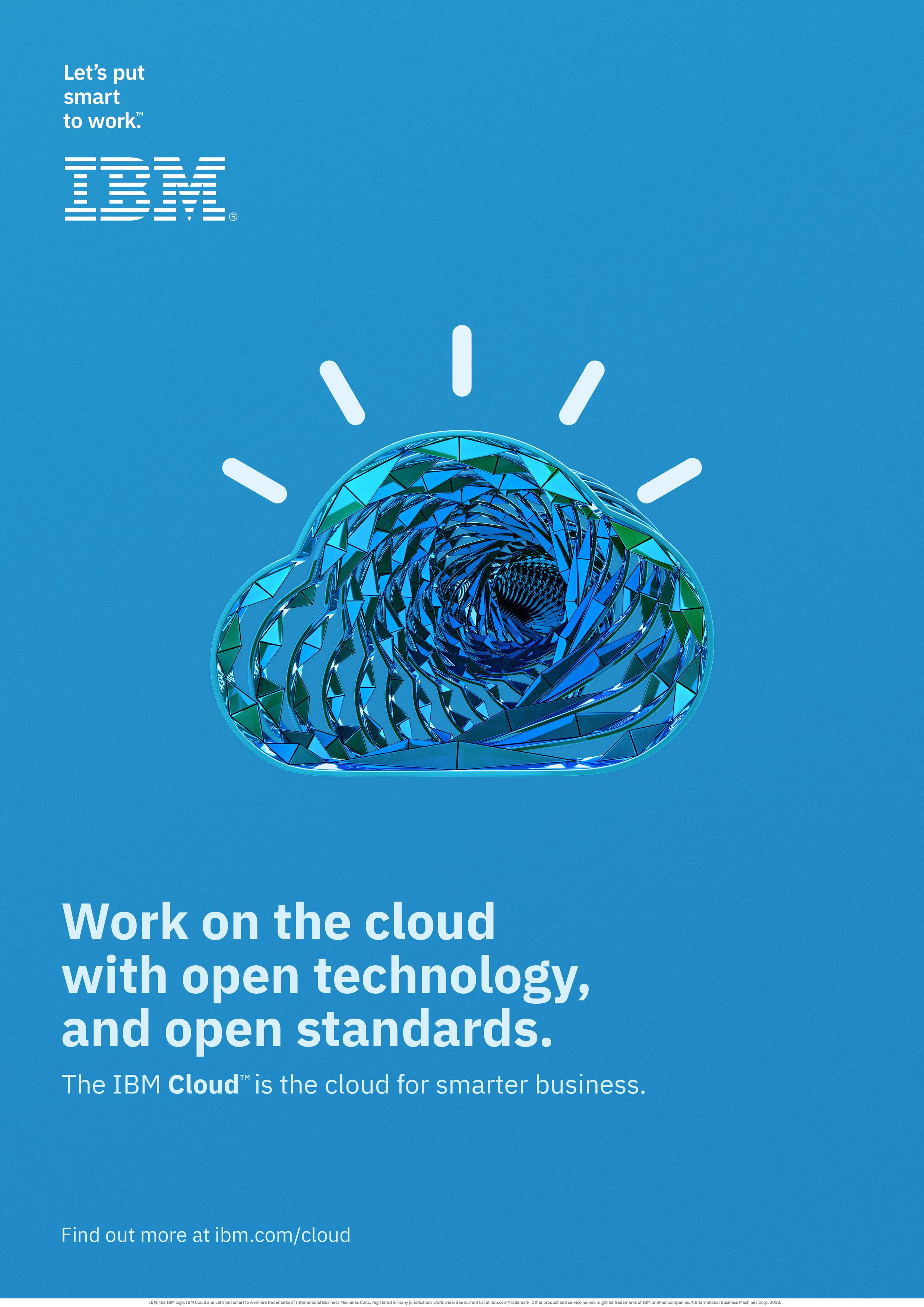
BLOCKCHAIN IMPROVES TRANSPARENCY, PROVIDING A FLOW OF INFORMATION
through digitised tariff processes and other means of determining the origins of a consignment. Traceability – by allowing for the reconstruction of the origin and movement of goods at every stage of the value chain, including audit trails and certifications.
Uptake of blockchain in supply chain in infancy
and offline. This approach creates a lot of friction and vulnerabilities when it comes to sharing information.
Blockchain is seen as a solution that can improve supply chains in the following areas: Transparency – by providing a flow of information to support supply chain planning, including production and distribution. Speed and efficiency – by helping get the right goods to the right place at the right time,

A PwC report into blockchain shows that although blockchain is spurring interest, it’s yet to see a massive amount of traction, with just 5% of companies and 27% of so-called ‘digital champions’ having implemented blockchain solutions, either in supply chain or other areas of business.
One company that is helping drive the adoption of blockchain in the supply chain is IT consultancy giant Tech Mahindra – part of the Mahindra Group, founded in 1945 and one of the world’s largest multinational federation of companies, with 260,000 employees in 100 countries.
“
TO SUPPORT SUPPLY CHAIN PLANNING”
supplychaindigital.com 109 TECH & AI
RAJESH DHUDDU, GLOBAL HEAD, BLOCKCHAIN & METAVERSE, TECH MAHINDRA
BLOCKCHAIN ENABLES REAL - TIME TRACKING OF KEY DATA - SETS, SUCH AS ADVANCED SHIPPING NOTICES AND BILLS OF LANDINGS”
Tech Mahindra meets the needs of global customers by leveraging next-generation technologies – including 5G, blockchain, cybersecurity and AI – to enable end-to-end digital transformation for global customers.
Rajesh Dhuddu, Global Head of Blockchain & Metaverse Practice at Tech Mahindra, was heavily involved in a recent blockchain project with a multinational automobile manufacturer. The goal of the project was to address challenges in procurement, orders, shipments, and accounts payables that were causing a lack of traceability, an excess of inventory and unreliable turnaround times.
Digital-ledger-based solutions work well in supply chain

Using blockchain technology, Tech Mahindra helped the client implement a distributed ledger-based solution that has cut costs across operations and administrative activities.
The solution deploys real-time tracking that eliminates all duplication in invoices and, says Dhuddu, improves operational efficiency by 30%.
Dhuddu said of the problems the client was facing: “Their inbound supply chain for procurement of production parts
“
RAJESH DHUDDU, GLOBAL HEAD, BLOCKCHAIN & METAVERSE, TECH MAHINDRA
110 February 2023 TECH & AI
Five advantages of blockchain in supply chain
With blockchain, the sustainability and security of a product can be examined endto-end, providing reassurance – from raw material to finished product.
Here are five ways in which the technology can make supply chain work better:
1. Zoned architecture
This enables those in the value chain to react to, and comply with, countryspecific regulation
2. Stronger sustainability
By closing down illegal and unethical practices, Blockchain helps industry and governments act more sustainably. The tech brings traceability, which can reduce environmental transgressions such as illegally exported timber or the environmentally unsound palm oil trade.
3. Better ESG compliance
The European Commission (EC) is just one of many regional political bodies looking to design and develop territorywide blockchain capabilities, compliance with which will determine how business is conducted, and by whom.
4. Increased efficiency
Supply chains can be fragmented, leading to inefficiencies. Blockchain allows data to be used in such a way that visibility is greater between the various tiers of the supply chain.

5. Stronger financial security
Payments made via blockchain can be monitored by both parties, meaning suppliers are no longer at a disadvantage in the buying process while they wait for processing. Blockchain speeds up the process, giving the parties more control and making the supply chain more robust.
supplychaindigital.com 111
involved multiple stakeholders from different regions.
“There was a lack of traceability, caused by a huge volume of physical invoices and documents alongside traditional processes such as manual payments and approvals, printing and submissions.”
Dhuddu says the client wanted an endto-end supply chain network “to ensure a secured digital ecosystem, improving both process efficiency and supplier relations”.
“In extensive design-thinking workshops, we helped establish a private permissioned
blockchain network for asset tracking among original equipment manufacturer (OEM) ecosystems,” he says.
They did so by connecting various virtual machines and nodes sitting in the Azure cloud, AWS Cloud and on-premises servers of the various stakeholders for network setup.
“Data security and privacy was pivotal,” Dhuddu says. “We ensured no data leakage was happening across stakeholders by bringing in role-based access, backed by blockchain.”

“ BLOCKCHAIN IMPROVES TRANSPARENCY, PROVIDING A FLOW OF INFORMATION TO SUPPORT SUPPLY CHAIN PLANNING”
112 February 2023
RAJESH DHUDDU, GLOBAL HEAD, BLOCKCHAIN & METAVERSE, TECH MAHINDRA
The distributed ledger automates the auto-maker’s:
• Existing business-process workflow
• Connected OEM-core supplier systems
• Third-party logistics providers
• Customs-handling agencies and banks
Dhuddu explains that this enabled real-time tracking of key data sets, such advanced shipping notices, bills of landings, bills of entry, goods receipts, and invoices. “All the required shipping documents were digitised, and workflow was automated, reducing time and
cost. We empowered the business stakeholders with accurate shipment visibility with the electronic travel authorisation details coming from another blockchain network in the ecosystem.
Blockchain-based payments network targets pain points
Tech Mahindra then created a payments’ network that targetted pain points in accounts receivables and payables “by creating smart contractbased automation to reconcile supplier and logistics providers’ invoices”.
“This meant there was minimal manual intervention from the business users,” says Dhuddu. “All the transactions and audit trails were made available to all the participants.”
Panacea Blockchain also helped the auto-maker achieve efficiency around its minimum viable product (MVP), which is the version of a product that has just enough features to be usable by early customers, who can then provide feedback for future versions of that product.

Dhuddu says: “For the MVR run, we on-boarded five global suppliers, a logistics provider, a customs clearance authority, and a trading company to consolidate orders and send the shipment to manufacturing plants in South Africa.
“The onboarding process was templated to enable stakeholders to be onboarded quickly and effectively. This also meant that they had a business case to take to the extended ecosystem.”
supplychaindigital.com 113 TECH & AI
THIRD-PARTY LOGISTICS PROVIDERS























































Here are the 10 of the largest 3PL providers, ranked by 2021 revenues
WRITTEN BY: SEAN ASHCROFT















114 February 2023
Third-party logistics (3PL) providers have a critical role to play in the supply chain, because they are often able to see disruptions early – particularly with regards to logistics’ routes. As such, 3PLs are often best placed to analyse the degree to which disruptive events might impact a company’s ability to deliver products on time.







What’s more, there’s currently an acute shortage of both labour and warehouses, and 3PLs have greater access to resources that can be shared across operations. There’s also a pressing need for automation in supply chains and logistics operations, an area in which 3PLs generally have more experience.
















































































TOP 10
supplychaindigital.com 115
DSV Panalpina
2021 revenues: US$6.2bn
DSV is a Danish transport and logistics company that offers global transport services by road, air, sea and train. It was founded in 1976 by a collective of nine Danish haulage companies that merged to form DSV. The company offers standard air freight services such as full charter and on-board courier, as well as sea freight services – including full container load, buyer's consolidation services, and non-containerised load. It has its HQ in Copenhagen, with offices in 80 countries.
Nippon Express

2021 revenues: US$10.1bn






Japanese logistics firm Nippon Express was founded in 1937, in Tokyo, with the Japanese government providing additional support, making it a semigovernmental body. It was fully privatised in the 1950s. In 2013, Nippon Express bought 67% of Panasonic Logistics, which is owned by Japanese electronics group Panasonic Corp. Its specialist markets include: automotive, electric and telecoms, fashion & retail, and food. It operates in 40 countries, with 744 branches across every inhabited continent.

TOP 10
10
09
XPO Logistics
2021 revenues: US$12.8bn
US global shipping and contract logistics services organisation

XPO Logistics is responsible for the supply chains of almost three-quarters of Fortune 100 firms. XPO’s headquarters are in Connecticut, and it boasts 1,530 sites in 30 countries. Specialty areas include: freight brokerage; intermodal and drayage (shortdistance logistics); last-mile distribution; and global forwarding.
KN Integrated Logistics is its supply chain arm, with the areas it handles including supplier and inventory management, aftermarket management, and supply chain technology.
Nippon Yusen
2021 revenues: US$16.4bn
Nippon Yūsen Kabushiki Kaisha, also known as NYK Line, is a Japanese shipping company whose headquarters are in Tokyo. Owned by the Mitsubishi Corporation, it was founded in 1870 as Tsukumo Shokai Shipping, transporting passengers between the port cities of Yokohama and Shanghai.
Alongside its main shipping operations, the company provides end-to-end logistics solutions. It owns and operates 800 shipping vessels, making it one of the world's largest shipping firms.
TOP 10
08 07 supplychaindigital.com 117







Join us at Join us at Procurement & Supply Chain Procurement & Supply Chain Live in London Live in London.
CJ Logistics

2021 revenues: US$19bn

South Korean logistics firm






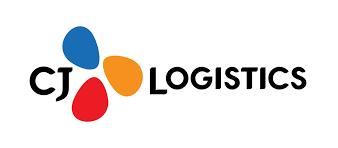
CJ Logistics is headquartered in Seoul. The oldest and largest parcel delivery firm in South Korea, it began life as Chosun Rice Warehousing in 1930 during the Japanese colonial era in Korea, though the company was later renamed Korea Express. Its main operations are contract logistics, freight forwarding, port logistics, courier services, and global transportation. In 2012, CJ Logistics was purchased by CJ GLS and merged into its logistics arm.
FedEx
2021 revenues: US$22.6bn
Based in Memphis, Tennessee, FedEx is a US global freight company. It was founded in 1971 as Federal Express, a specialist in expedited deliveries.


FedEx is the world's largest cargo carrier in terms of scheduled freight tonne kilometres and the fourth largest in terms of fleet size. The company has operations in 220 countries and 3,000sqm of warehouse space.
Industries it serves include: technology and electronics; retail and ecommerce; consumer and industrial goods; and healthcare industries.
TOP 10
06 05 supplychaindigital.com 119
DB Schenker Logistics

2021 revenues: US$23bn


DB Schenker is the logistics division of Deutsche Bahn AG, a German rail group. It’s one of the world's leading global logistics providers and based in Essen, Germany. Schenker manages the supply chains of global corporations such as Apple, Proctor and Gamble, Dell, BMW, and Ford, with divisions dedicated to ground transport, ocean freight, air freight, contract logistics, and supply chain management. The company's global network spans 794 sites in 60 countries.
UPS


































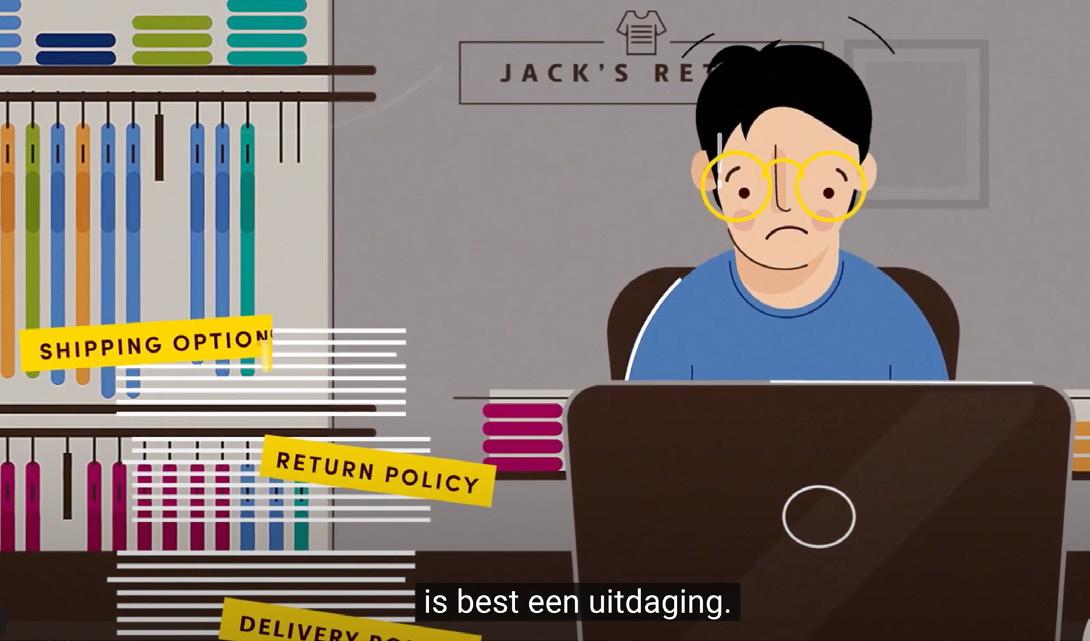
2021 revenues: US$27.8bn

US-based parcel delivery service UPS (United Parcel Service) has been around for more than a century, having been founded in 1907 as a messenger service operating out of Seattle, though its HQ is now in Atlanta, Georgia. The company specialises in shipping, air freight, trucking, last-mile distribution, and drone delivery.
UPS has more than 35 million sqft of distribution and warehousing facilities across 1,000 locations, spread out in 120 countries. In all, it serves 220 countries and territories.
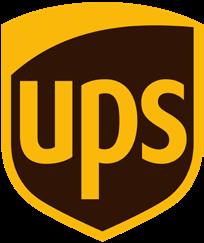
TOP 10
04
120 February 2023
03
Kuehne + Nagel

2021 revenues: US$35.6bn
Kuehne + Nagel began life in 1890 Bremen, Germany as a humble forwarding agency for cotton. Today, it is a Swissowned holding company with interests in sea freight, air freight, contract logistics, and overland transportation. It is also a specialist in IT-based logistics solutions. The company operates in 65 countries and employs approximately 82,000 people. In 2013, it merged its railfreight business with VTG to form VTG Rail Logistics, which is now Europe's largest private rail freight business.
TOP 10
02 supplychaindigital.com 121
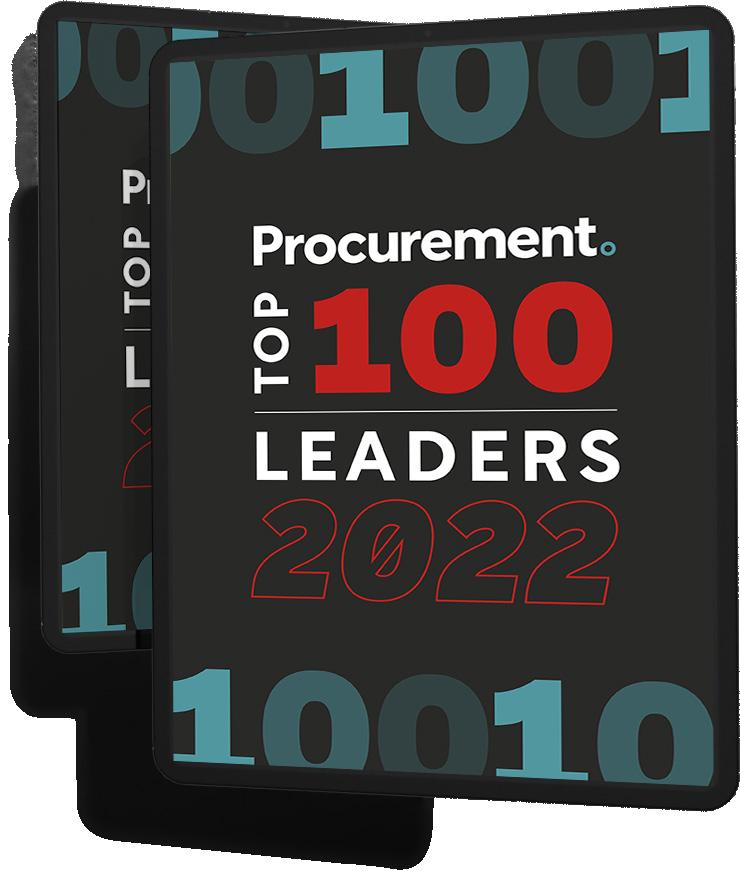
0 0 0 0 1 1 A BizClik Brand

OUT NOW Read now 10 0 0 0 1 LEADERS2022 • LE A D SRE 2202 • SREDAEL2202 • EL A D ERS2022 • Creating Digital Communities Don’t miss this Issue! The most influential people in Procurement

TOP 10 Life and Work at Deutsche Post and DHL 124 February 2023
Deutsche Post DHL Group



2021 revenues: US$84bn


Deutsche Post DHL Group –headquartered in Bonn, Germany – is a business of two parts. DHL began in 1969 as US company DHL Air Cargo and, by the late 1970s, was providing services globally. Deutsche Post bought it in 2002, acquiring DHL for its express division, which operates out of 430 warehouses.
Deutsche Post delivers 61 million letters each day in Germany, making it Europe's largest company of this type.
TOP 10
“Deutsche Post delivers 61 million letters each day in Germany, making it Europe's largest company of this type”
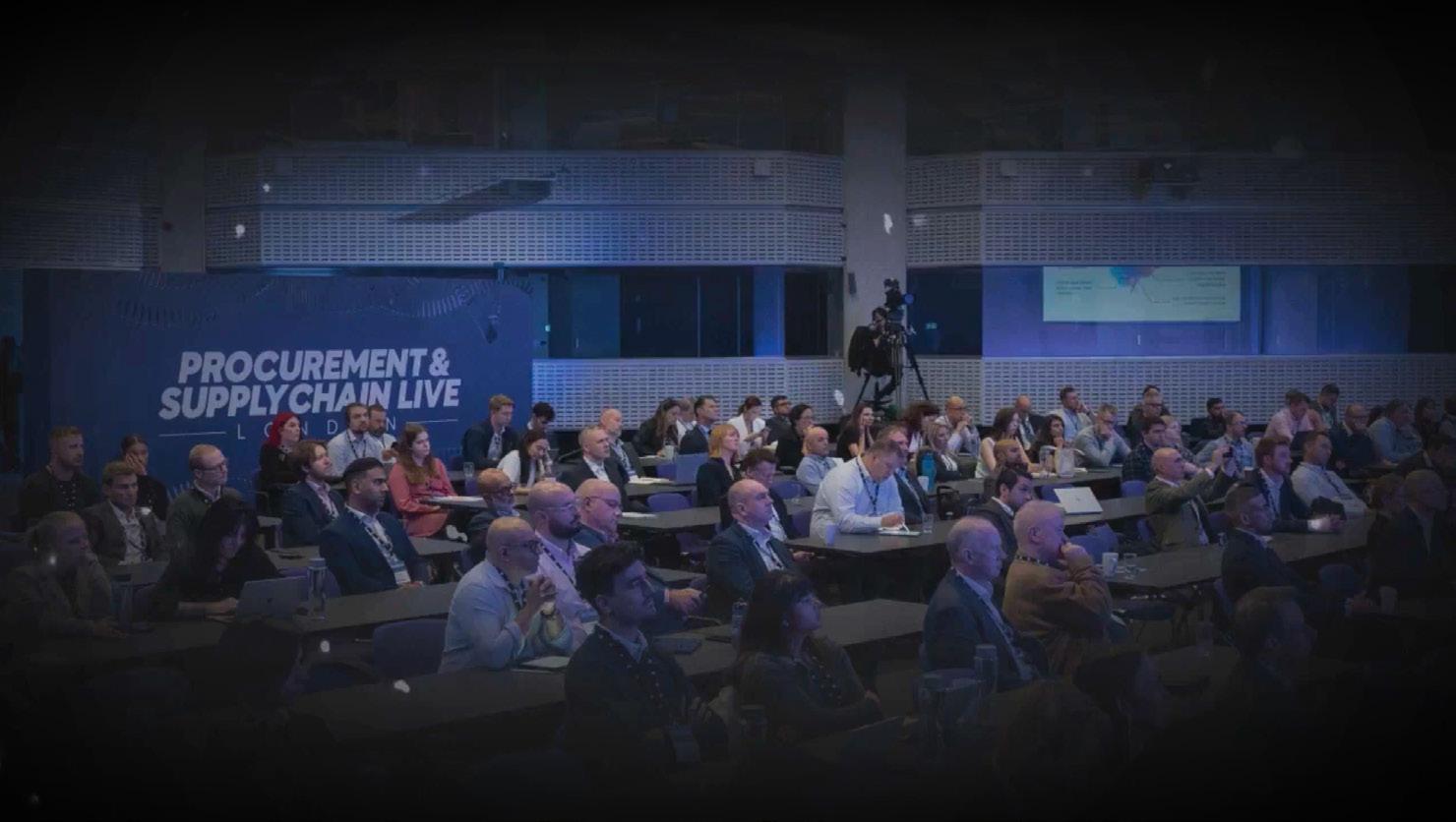
Get tickets Sponsor opportunities 28th JUNE 2023 VIRTUAL CONFERENCE » 10:25AM-2PM BST Watch our 2022 Showreel A BizClik Event













































































































































 WRITTEN BY: SEAN ASHCROFT
WRITTEN BY: SEAN ASHCROFT
































 WRITTEN BY: SEAN ASHCROFT
WRITTEN BY: SEAN ASHCROFT

































































